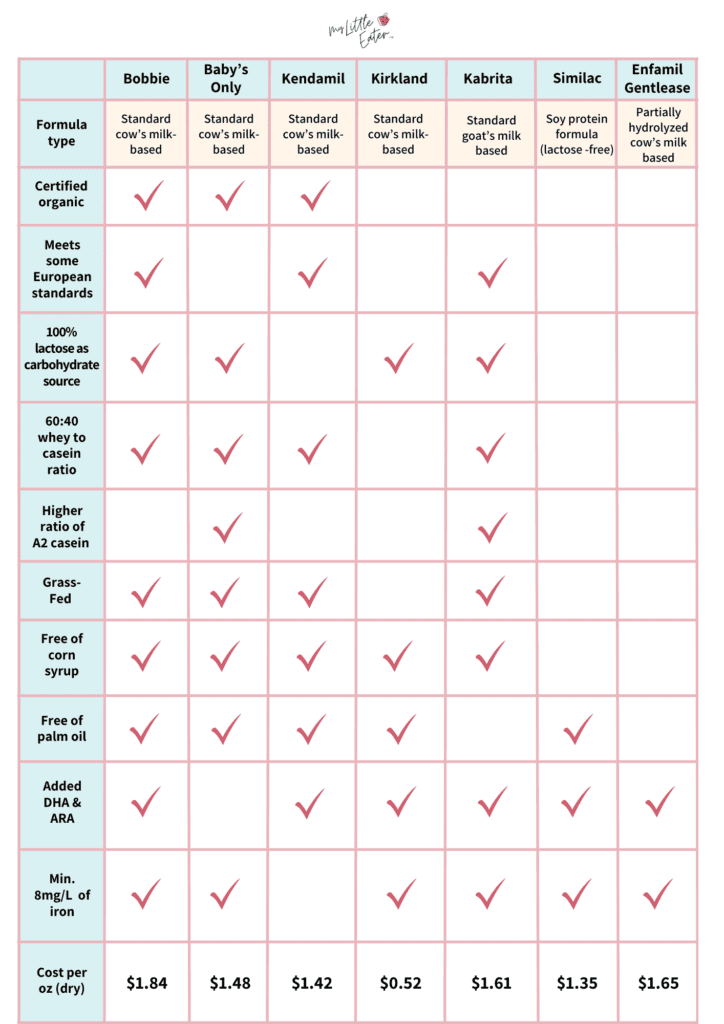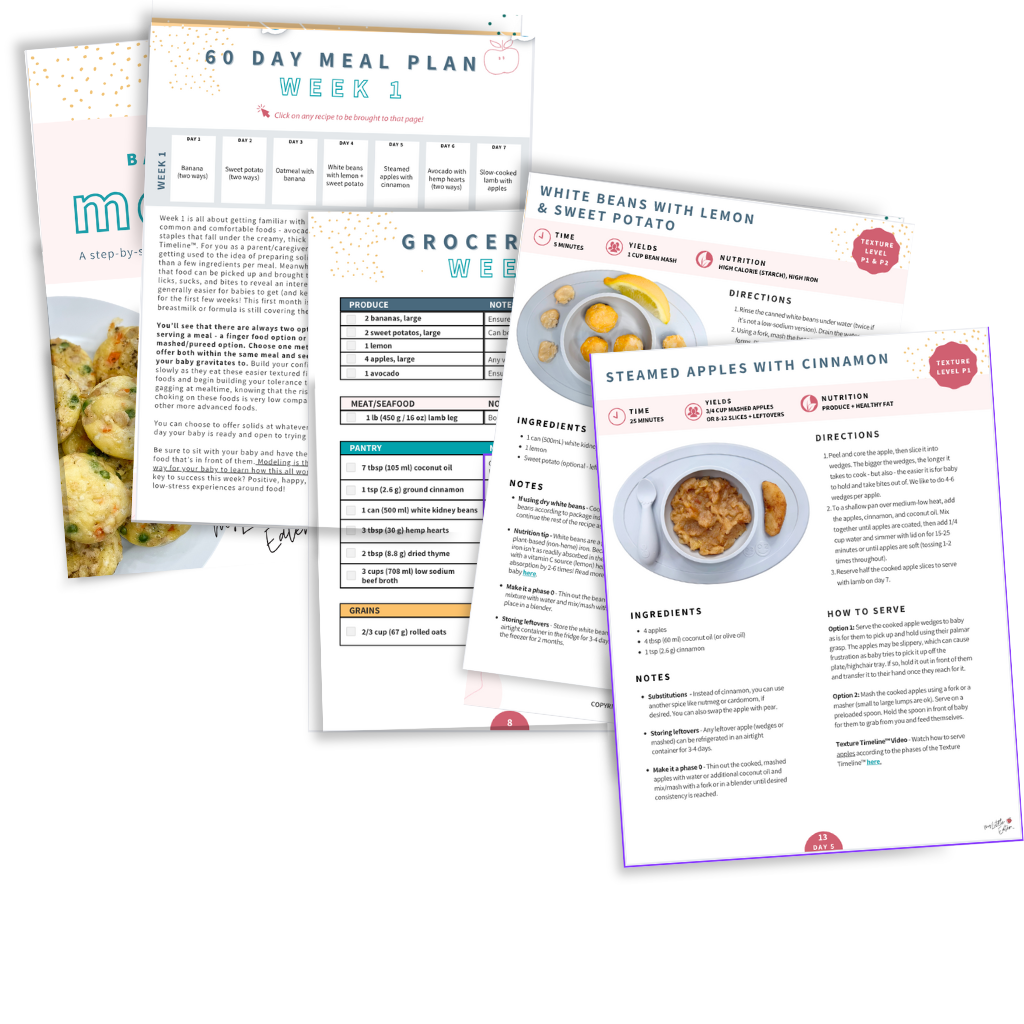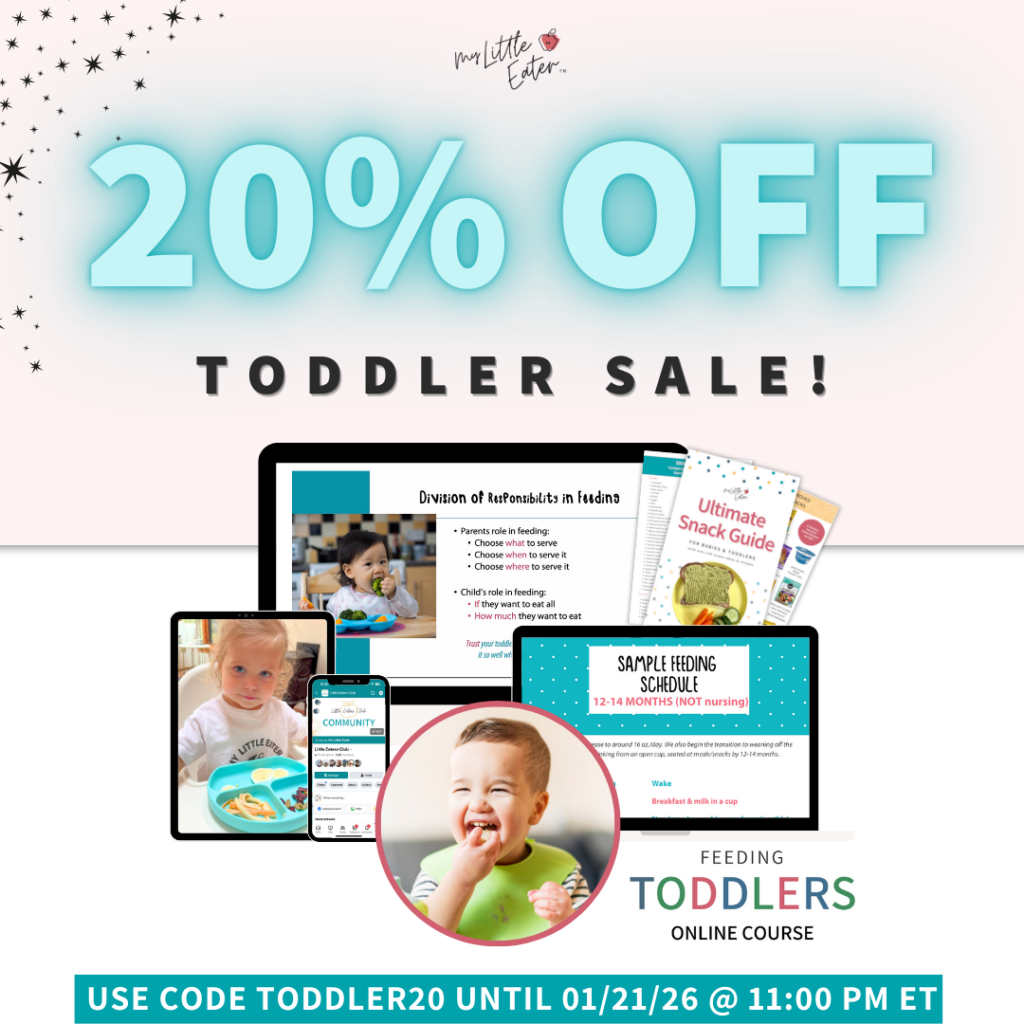- No Comments
- Bianca Gruenewald, RD(c)
This post was sponsored by Bobbie and contains affiliate links, please view our disclosure policy for more details.
Let’s set the scene…you’re standing in the baby formula aisle for the first time and don’t know where to start. You know that this decision is way too important to leave up to a game of “eeny meeny miny moe”, but you’re so overwhelmed by all of the options, that you’re starting to consider it.
If you’ve ever found yourself in this situation, you are not alone, my friend.
Choosing the right baby formula can feel totally overwhelming! While there is no one perfect formula, there are some things to consider when choosing a formula that will be right for YOUR baby.
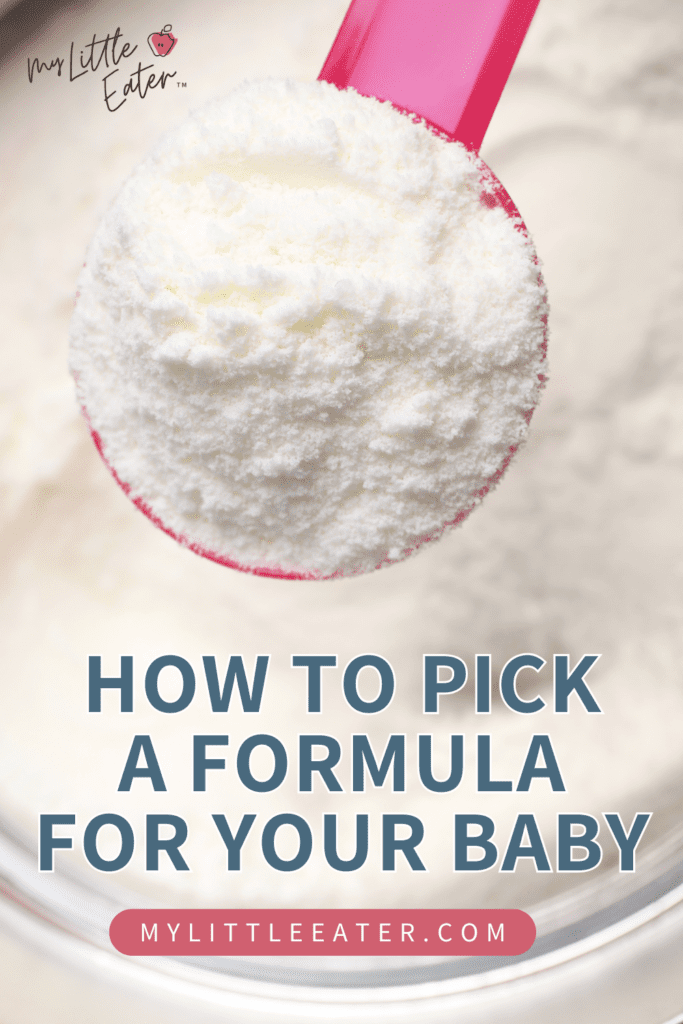
We’re here to explain everything you need to know about the different types of baby formula out there, and how to pick a formula that is right for your little one…think of this as your crash course on baby formula.
We’ve also included a comparison of some of the most popular brands for you to see the pros and cons of each and make the best decision for you and your baby.
Table of Contents
10 tips for picking the
best formula for your baby
10 tips for picking the best formula for your baby
1. Don’t overanalyze the nutrition label.
2. Pay attention to key ingredients.
3. Ignore marketing gimmicks.
4. Test one formula at a time.
5. Give your baby time to adapt.
6. Follow your baby’s cues for what’s working and what’s not.
7. Compare name brands to similar store brands.
8. Consider your budget.
9. Consider formulas that are inspired by European standards.
10. No formula is best for every baby, but there are formulas that will be best for your baby.
Baby formula basics
Baby formula is one of the most highly regulated food products out there – and for good reason – your baby deserves the best!
Babies grow and develop more quickly during their first year than at any other time in their life. To make sure that babies get all of the nutrients they need to support their growth during this time, the government has strict nutrition standards in place for all formulas (1).
These standards outline 30 essential nutrients, including minimum amounts for protein and fat, so that formula meets all of an infant’s nutrient requirements (2).
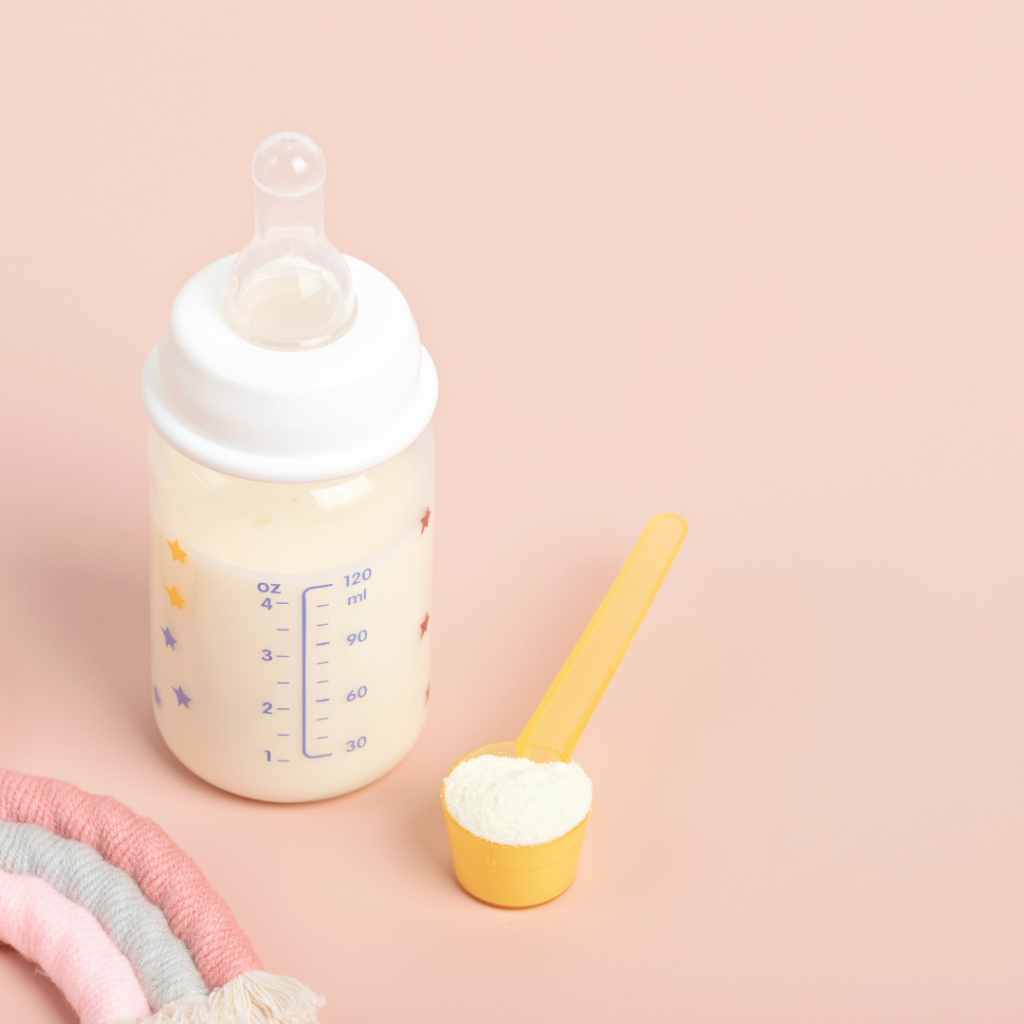
A note about iron
Iron is one of the key nutrients babies need for growth and development, so all formulas are fortified with iron (even if the formula doesn’t directly note it on the front of the label). However, some countries have different ranges for the amount of iron that has to be included, so the levels of iron in formula can vary depending on where you live (3).
We recommend looking for a formula that has an iron content of at least 8mg/L (or 1.1mg/100kcal).
Otherwise, there’s no need to spend too much time analyzing the nutrition facts label. You can rest assured knowing that all store-bought baby formulas have the nutrients your little one needs to grow and thrive.
Now that we’ve put the stress of the nutrition facts tables to rest, let’s start with the basics of choosing a good formula – understanding the ingredients!

Ingredients to look for in infant formulas
Since all formulas have to meet the same nutrition standards, the main difference between the types of infant formula on the market comes down to the exact ingredients used to meet those requirements – specifically, differences in the protein, carbohydrate, and fat sources.
Protein sources in formula
Infant formulas are usually made from cow’s milk, which might come as a surprise if you’ve heard us and other feeding experts say that cow’s milk shouldn’t be given to babies under 12 months. It’s important to know that the cow’s milk used to make baby formula is different from regular cow’s milk found in the dairy aisle of the grocery store.
Cow’s milk in baby formula is altered during processing to make the milk proteins safe for the little digestive systems of babies (4). Formula made from cow’s milk is also made to contain all of the nutrients your baby needs to grow and thrive in the right amounts, unlike regular cow’s milk on its own.
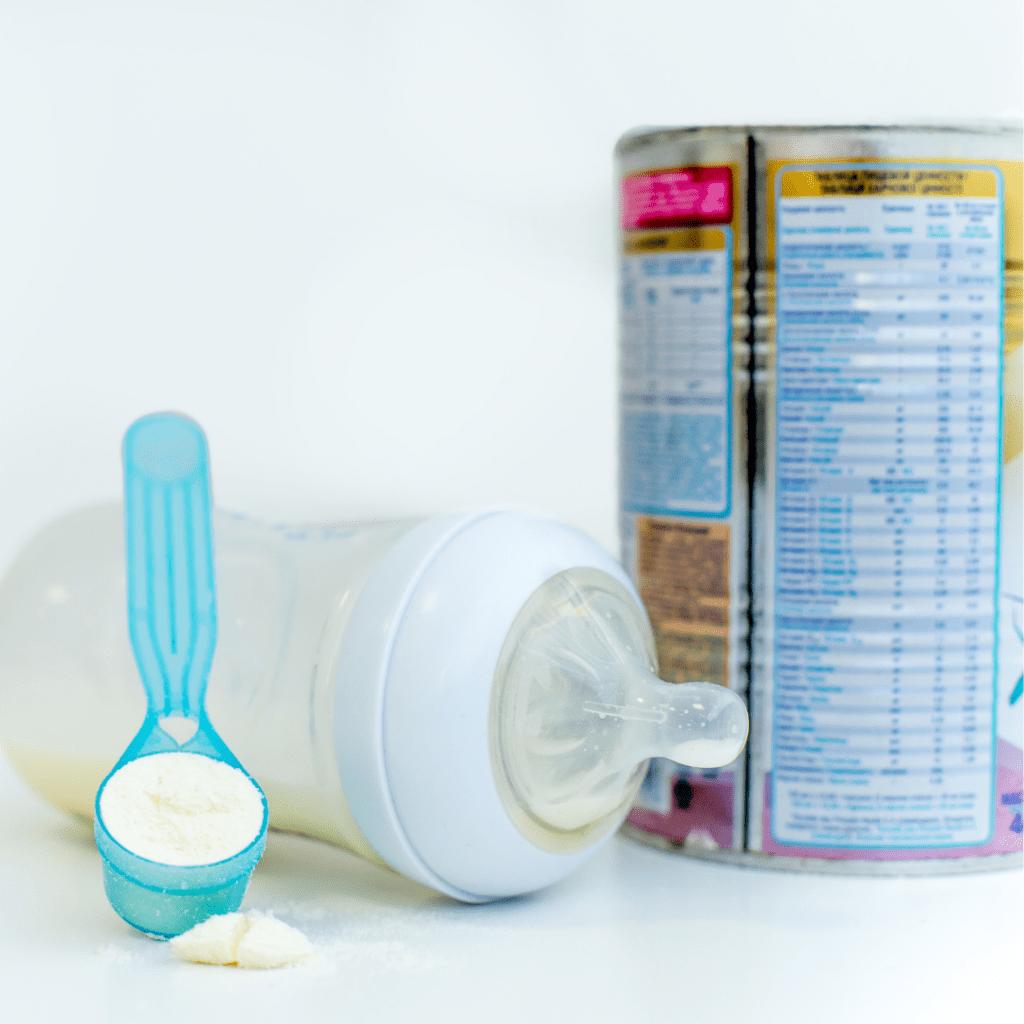
On the ingredient list, cow’s milk can show up as whole milk, skimmed milk, or nonfat milk (4). More specifically, the proteins that come from cow’s milk can show up as “milk protein isolate”, “whey protein” or “casein protein”.
Whey-to-casein ratio
Whey and casein are the two main types of proteins found in milk. In breast milk, the ratio of whey to casein varies depending on the mom’s diet, but is around 60:40. Cow’s milk on the other hand is higher in casein, with a whey to casein ratio of 20:80 (5).
Both whey and casein offer important nutritional benefits, but a key difference is that casein curdles when it gets to the acidic environment of the stomach, while whey stays as liquid. Because of this, whey digests more quickly and is a bit easier to digest in general (6).

Many formulas try to mimic the whey-to-casein ratio in breast milk for this reason – especially for babies who have sensitive tummies. We recommend choosing a formula with a 60:40 whey to casein ratio if possible.
Some formulas may advertise their whey-to-casein ratio right on the label, but not all formulas will write it out so clearly. When in doubt, check the ingredients list. Ingredients are written in order of highest weight to lowest weight. Therefore, when whey protein is listed before casein protein, this means that there is more whey than casein, which is ideal.
We’ve included an example of the Bobbie Organic Infant Formula ingredient list below. In this case, organic nonfat milk is listed before organic whey protein concentrate. Because nonfat milk contains both whey and casein protein, the extra whey protein concentrate is how the desired 60:40 whey-to-casein ratio is created.
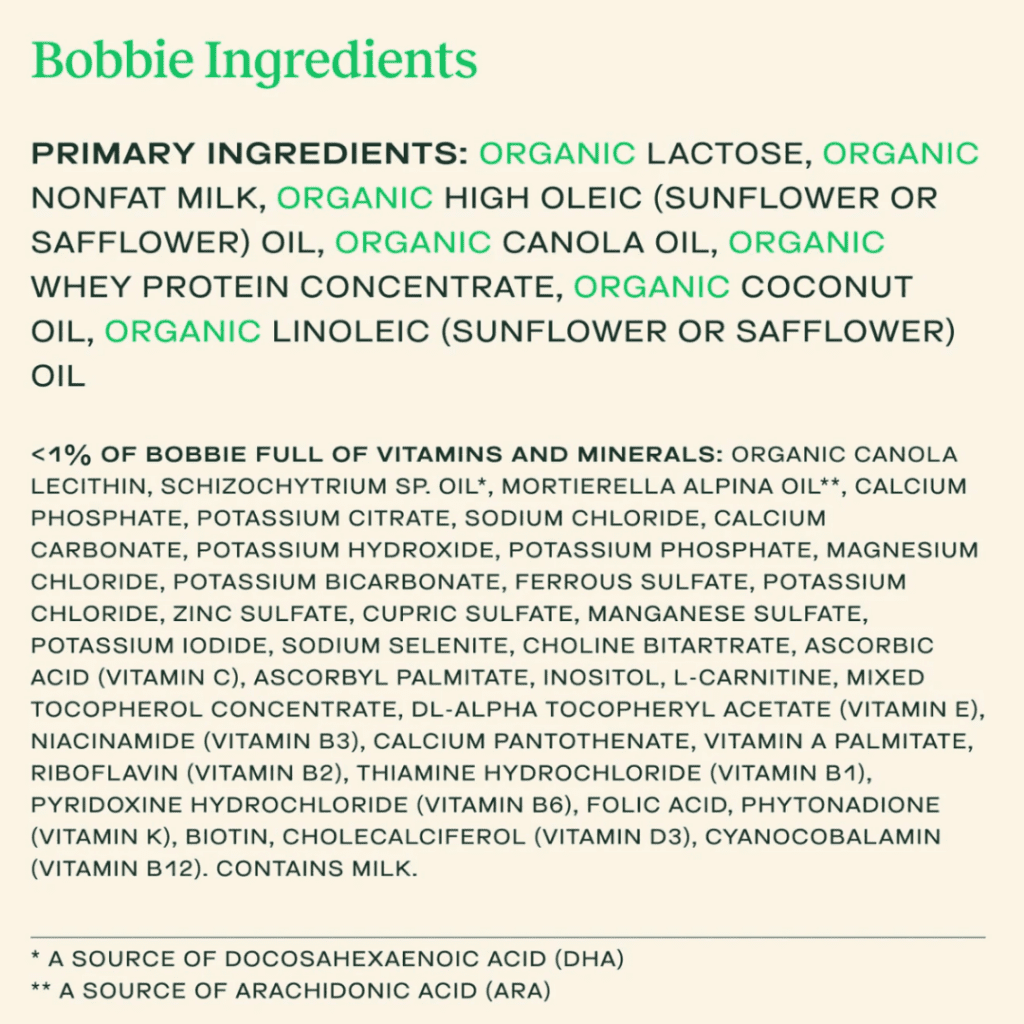
A2 casein
Another thing to note is that cow’s milk contains a mixture of two different kinds of casein protein: A1 beta-casein and A2 beta-casein. The casein in breast milk, on the other hand, is mostly A2.
Simply put, A2 casein can be easier to digest and has been shown to cause fewer symptoms of gas and stomach upset compared to A1 casein (7). This is why some baby formulas choose to make their product using milk from cows that only produce A2 casein.
While it’s not necessary to find an A2 cow’s milk formula, it can be a great option for babies who have more sensitive tummies or aren’t tolerating standard cow’s milk formula.
A note on grass-fed dairy
The term “grass-fed” on infant formula means that the cows who produced the milk were fed only grass instead of corn and other grains in addition to grass. Milk from grass-fed cows does have a slightly higher concentration of omega 3 and omega 6, which are healthy fats important for your baby’s growth and development (8).
We recommend choosing formula made with grass-fed milk when possible but don’t let it make or break your decision. Non grass-fed cow’s milk-based formulas still contain some omega 3 and 6!
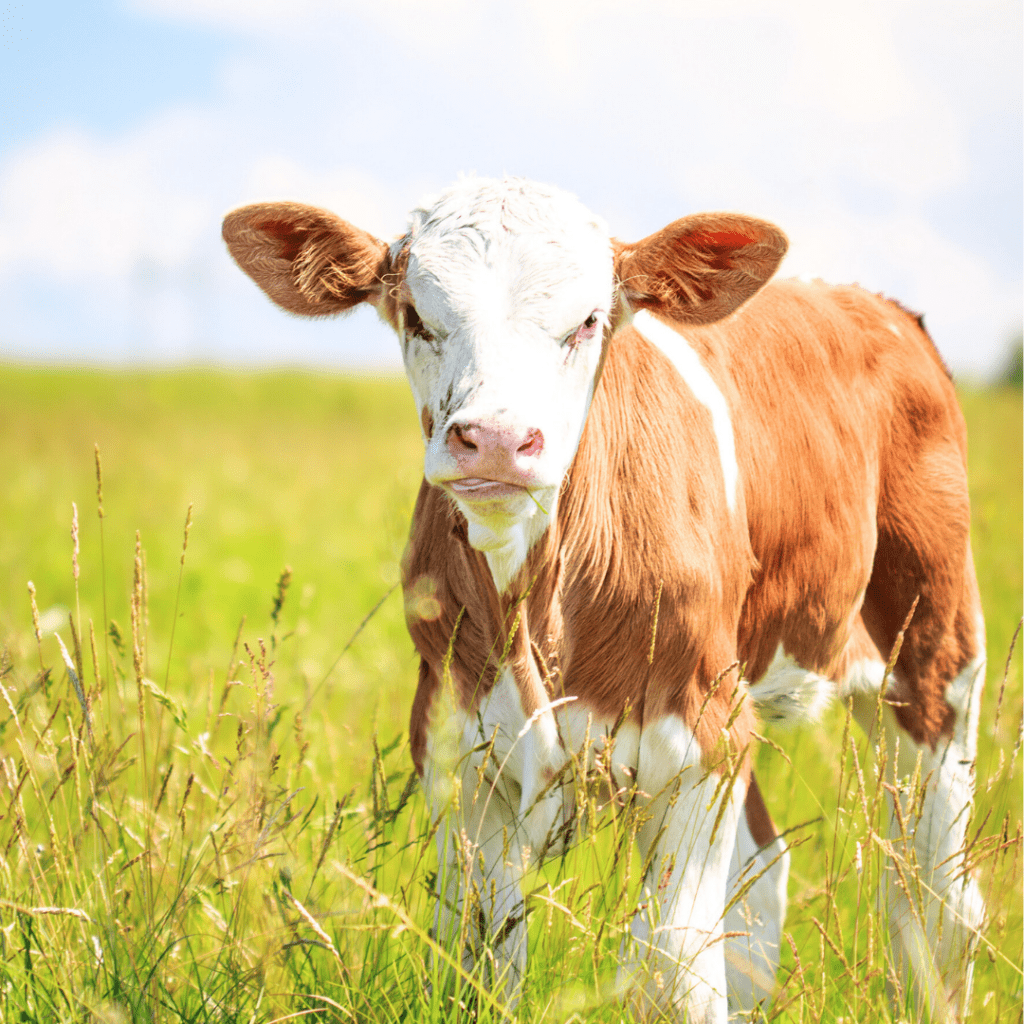
Carbohydrate sources in formula
Lactose is a natural sugar and can be one of the main sources of carbohydrates in some baby formulas. Lactose is easy to digest for most healthy babies – the only exception to this is babies with lactose intolerance, which is rare (9).
Other sources of carbohydrates you may see on the ingredient list of various baby formulas are corn syrup (or corn syrup solids), maltodextrin, glucose syrup, and sucrose (table sugar).

We recommend choosing a formula that has lactose as the main source of carbohydrates in the ingredient list because it’s also the primary carbohydrate found in mature human breast milk.
Fat sources in formula
When it comes to your baby’s nutrition needs, fats are at the top of the list…babies need lots of it! But, not all fats are created equal.
The fats naturally found in cow’s milk are mostly saturated fats, while breast milk contains a variety of fats that are important for your baby’s health including monounsaturated and polyunsaturated fats (omega-3s and omega-6s).
To meet the nutrition standards for fats in baby formula, most formulas use a blend of different vegetable oils to accomplish a fat profile similar to breast milk. Some fat sources commonly found in baby formulas are palm oil, canola oil, coconut oil, sunflower oil, safflower oil, and soy oil.
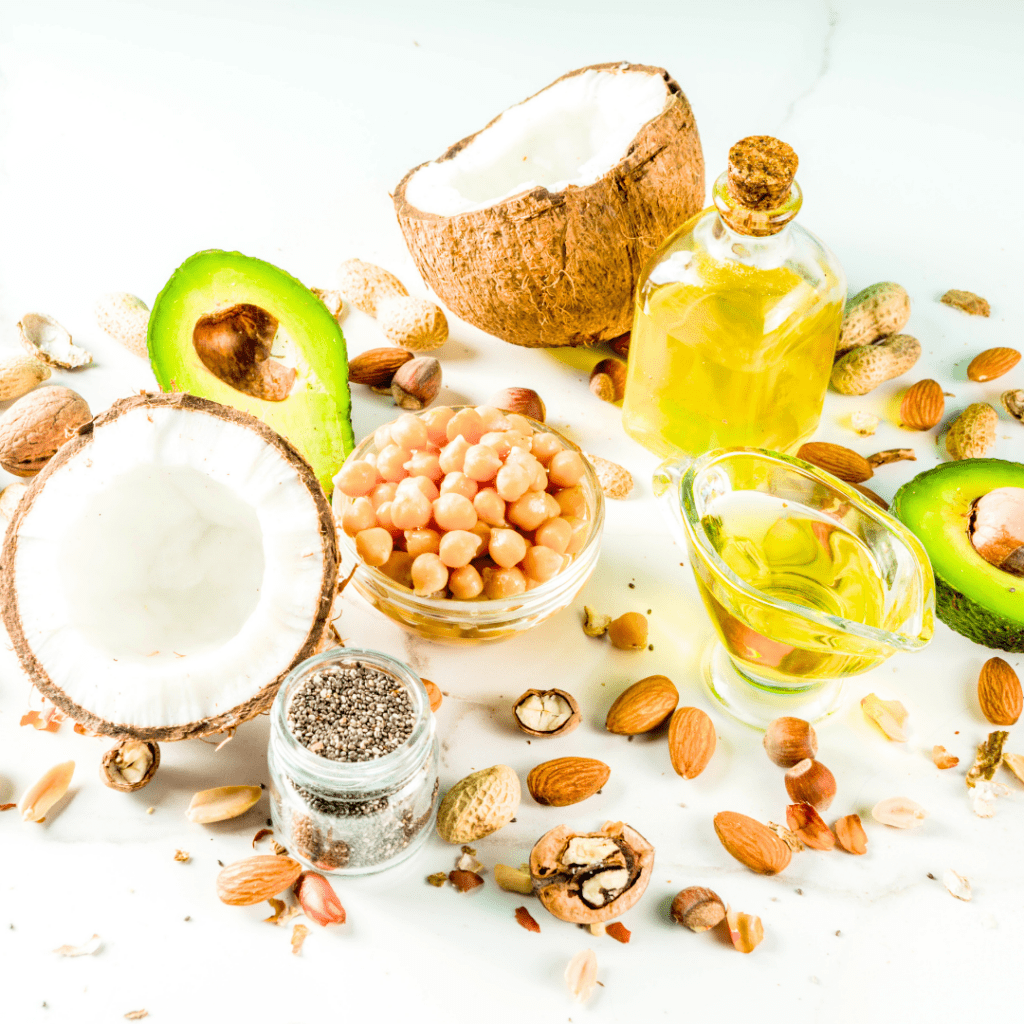
Studies have shown that palm oil in baby formula can decrease the absorption of calcium, which is an important mineral for bone health (10). For this reason, we prefer formulas that don’t use palm oil and instead use a blend of the other fat sources mentioned above (10).
DHA and ARA
You may have noticed that some baby formulas have “added DHA & ARA” on the label…but what does that mean?
DHA (also known as docosahexaenoic acid) is an omega-3 fatty acid, and ARA (arachidonic acid) is an omega-6 fatty acid. Both are found naturally in breast milk and fall under the category of healthy fats that support brain development and eye health in babies (11,12).
In European countries, adding DHA into infant formula is required. In Canada and the US, it’s still optional, although most baby formulas do choose to add in DHA and ARA, which we love (13)!
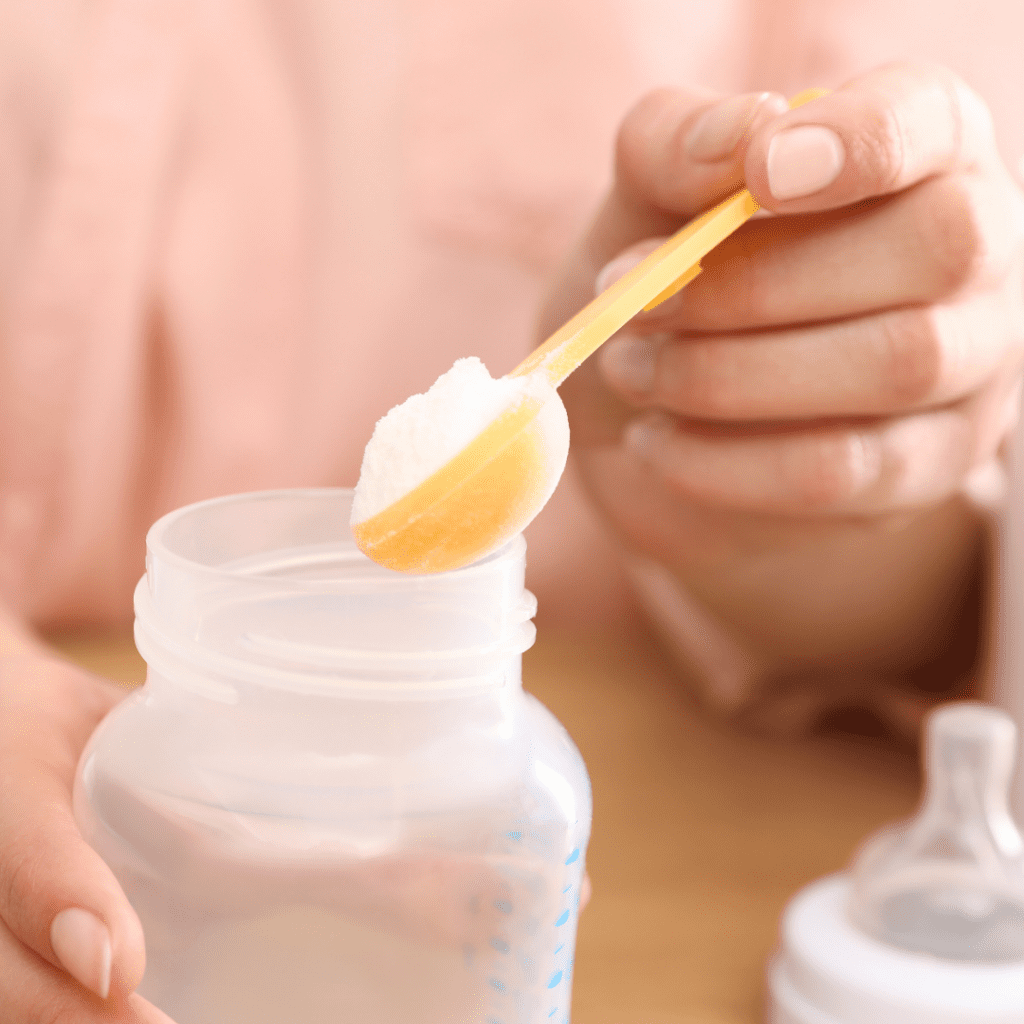
We recommend looking for a formula with around 11.5mg DHA per 100mL (or 16mg per 100kcal), which is the average amount found in breast milk (14).
If you find a formula that you love and it doesn’t have added DHA or ARA, there’s no need to stress. You can add a daily omega-3 supplement with 500mg of omega-3 fats (15). These may have the omega-3s listed as a combination of DHA and EPA instead. EPA is also known as eicosapentaenoic acid and is another type of omega-3 fat (15).
Speak to your doctor about the best option for your baby before beginning any supplements.
Are organic ingredients best?
While all baby formulas (organic or not) are highly regulated in terms of nutrition content, there are some benefits to choosing a formula that is certified organic.
For a formula to be labeled as organic, most of its ingredients need to be free of certain substances such as synthetic pesticides, fertilizers, genetically modified organisms (GMOs), growth hormones, antibiotics, artificial preservatives, colors, and flavors (16). Choosing an organic formula offers the benefit of reducing your baby’s exposure to the substances listed above.

So, do you need to get an organic baby formula? No, you don’t need to. But, if choosing an organic formula is accessible to you, we recommend doing so.
We acknowledge that organic formula is typically more expensive, which is an important factor to consider. If organic formula is not an option for you – please don’t feel bad! Non-organic formulas are still a safe way for your baby to get the nutrition they need (17). Organic formula is good, but a fed baby is best.
Powdered or ready-to-serve?
Choosing an infant formula includes deciding between offering powdered, concentrated liquid, or ready-prepared formula.
Both ready-prepared and concentrated liquid formulas come packaged in individual portions, which decreases the risk of accidental contamination during bottle preparation. The ready-prepared formula also has the benefit of being ready to serve, which decreases the risk of preparing the formula incorrectly.
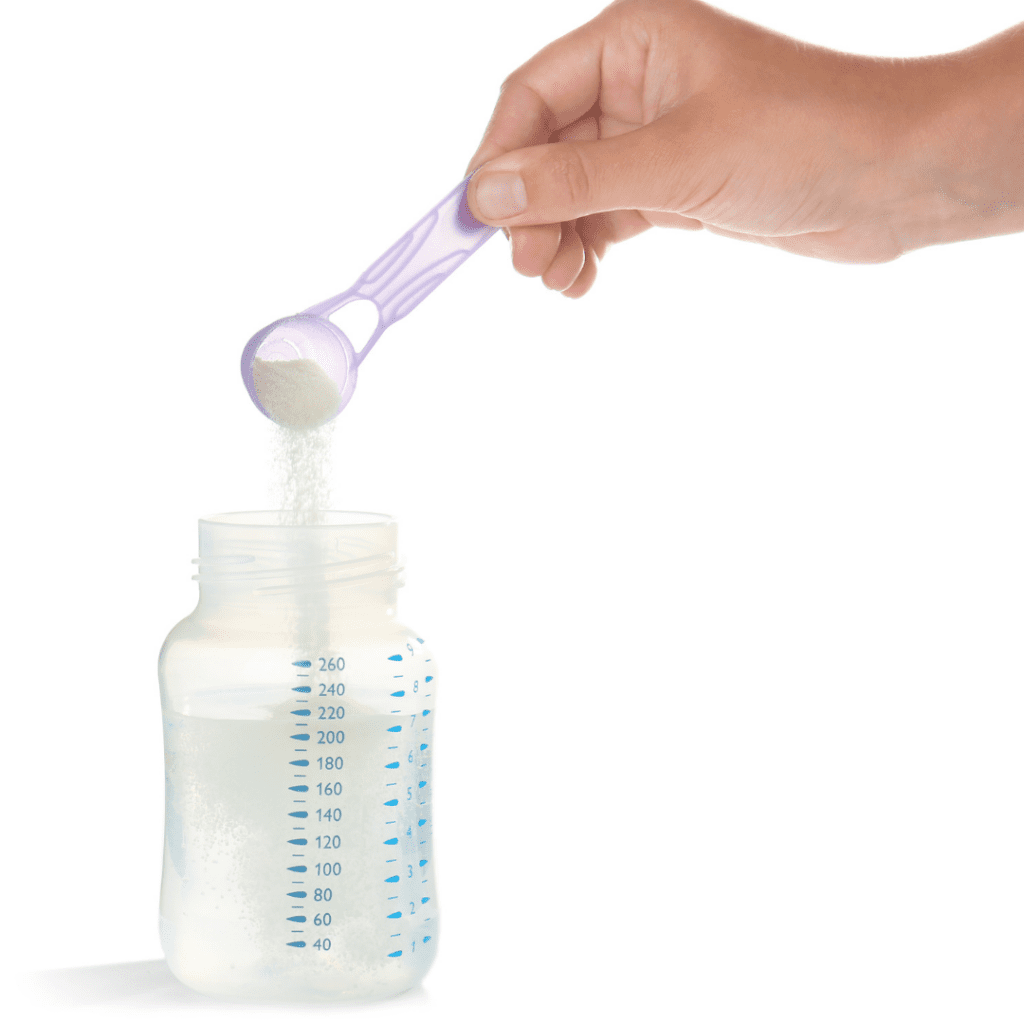
That being said, ready-prepared and concentrated liquid formulas do tend to be much more expensive than powdered formulas, and your baby may not drink all of an individual portion before it expires, leading to more waste. This is why powdered formula is the most common and accessible option.
The choice between ready-prepared, liquid, and powdered is truly just a matter of preference, budget, and convenience. All three are safe choices for your baby’s formula. As long as you read the storage and preparation instructions carefully, then you’ll be just fine!
Different types of formula
Ok, we’ve got the basics down, but unfortunately, there are still a lot of specialized formula options to choose from!
Aside from the source of the protein, formulas can also be categorized by the size of the protein in them…confusing, we know. Let’s break it down for you and explain why this can be an important decision to make when choosing the right infant formula.

Standard formula
Standard baby formulas are usually made with cow’s milk, and the proteins in them are regular-sized or intact. This means that the proteins have not been broken down to be made smaller.
Cows’ milk protein is larger in size than the protein found in breast milk, however, most healthy babies are able to digest them as is and do not need the protein in their formula to be partially or completely broken down (1).
Hydrolyzed formula
The word “hydrolyze” means “to break down”. In some cases, like with an allergy, sensitivity, or medical condition, babies may have trouble digesting the larger proteins found in standard formulas. Therefore, the proteins need to be broken down to make them easier to digest.
Formulas can either have partially hydrolyzed proteins (broken down a little bit) or fully hydrolyzed (broken down a lot). In fully hydrolyzed formulas, the proteins are broken down so small that they become even smaller than the proteins found in breast milk.
Many babies with cow’s milk protein allergy can tolerate fully hydrolyzed cow’s milk formula (18). This is because the proteins are broken down so small that the body may no longer recognize them as an allergen (18).
Please speak with your baby’s doctor if you’re concerned that they may have an allergy.

Amino acid formula
Amino acid formulas, often labeled as hypoallergenic formulas, are made with the smallest building block of protein – amino acids. They can be used for babies with cow’s milk protein allergy who are not able to tolerate fully hydrolyzed formula, or for babies with certain medical conditions related to digestion.
It’s important to know that most healthy babies don’t need amino acid formulas, and they’re mostly used under recommendation from a physician (18).
Low lactose & lactose-free formula
Low lactose and lactose-free formulas exist for babies with lactose intolerance, which as mentioned above, is rare. Soy milk-based formulas are also typically lactose-free and are another option for babies who struggle to digest lactose.
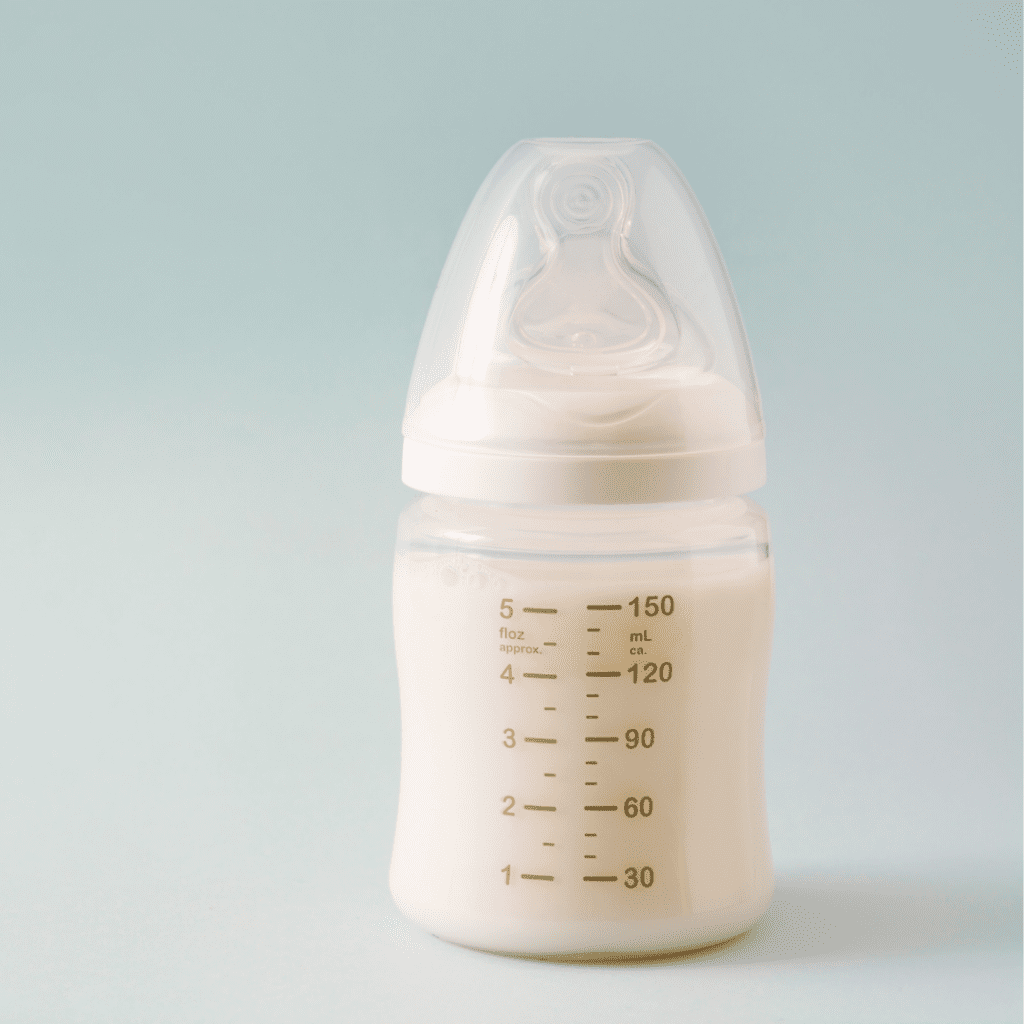
Lactose is the carbohydrate naturally found in breast milk and is very healthy for most babies. Therefore, it’s not recommended to use lactose-free or low-lactose formula unless your baby has been formally diagnosed with lactose intolerance (9).
Soy-based formula
Soy-based formula is sometimes used for babies who have lactose intolerance or cow’s milk protein allergy. It’s also an option for families who are plant-based for cultural or religious reasons.
There has been some concern in the past about phytoestrogens in soy and their effect on hormones and health. The most recent research shows that soy formulas do not negatively impact health compared to cow’s milk formulas. Still, researchers agree that more studies are needed on the long-term effects of feeding soy-based formula (19).
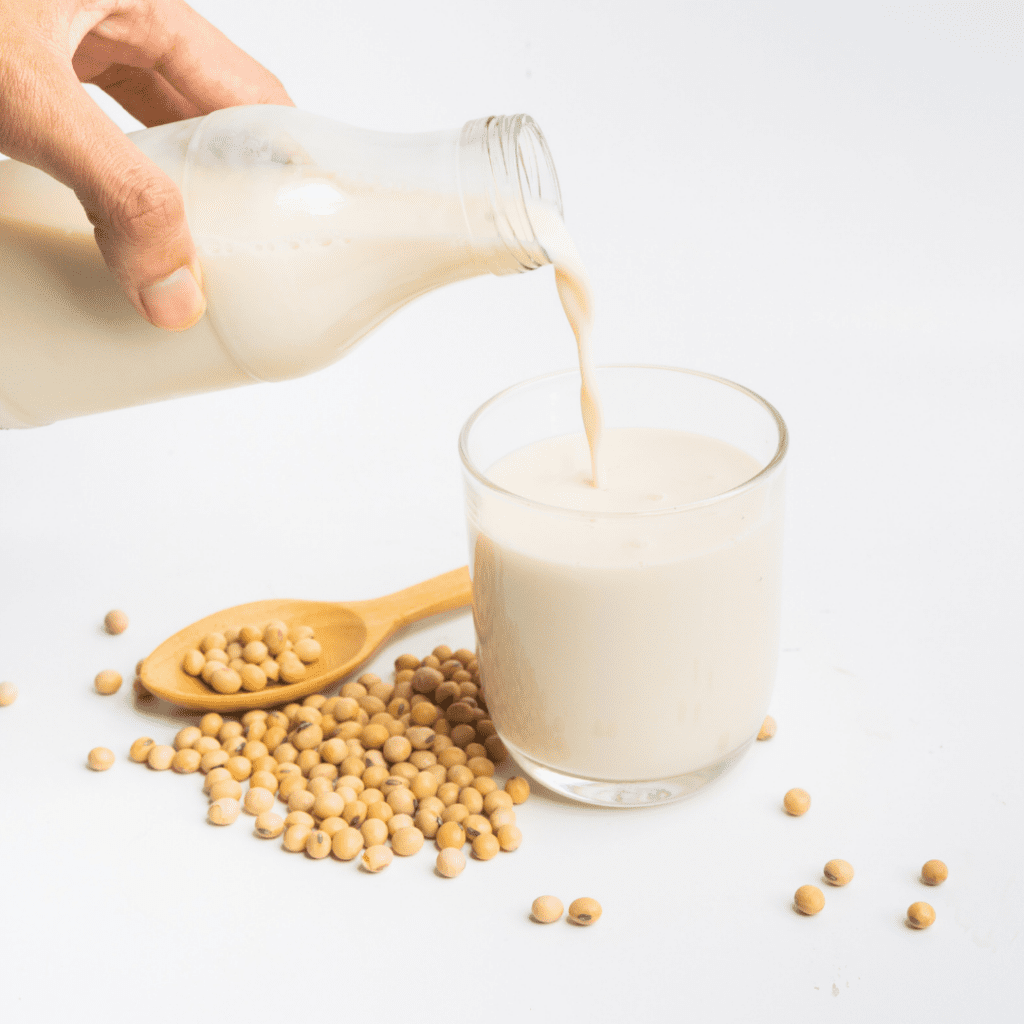
This is why even for babies with cow’s milk protein allergy, experts recommend a cow’s milk-based hydrolyzed formula before soy baby formula. Similarly, babies with diagnosed lactose intolerance are usually recommended to be trialed on a lactose-free cow’s milk-based formula before trying soy (20).
It’s agreed that soy protein formulas should only be used for those who cannot have dairy for cultural or religious reasons, or in the case of babies diagnosed with galactosemia (a serious condition that prevents the digestion of the carbohydrate galactose, which is found in lactose) (19).
In short, soy-based formula is considered safe, but for most babies, cow’s milk-based formula is the best and most accessible option (21).
Goat’s milk formula
Goat’s milk has a naturally higher ratio of A2 casein protein, which can be easier to digest than A1 casein (the main casein protein in cow’s milk) (21, 7). This makes it a potentially good alternative for babies who are not tolerating cow’s milk formula due to excessive gas or stomach upset.
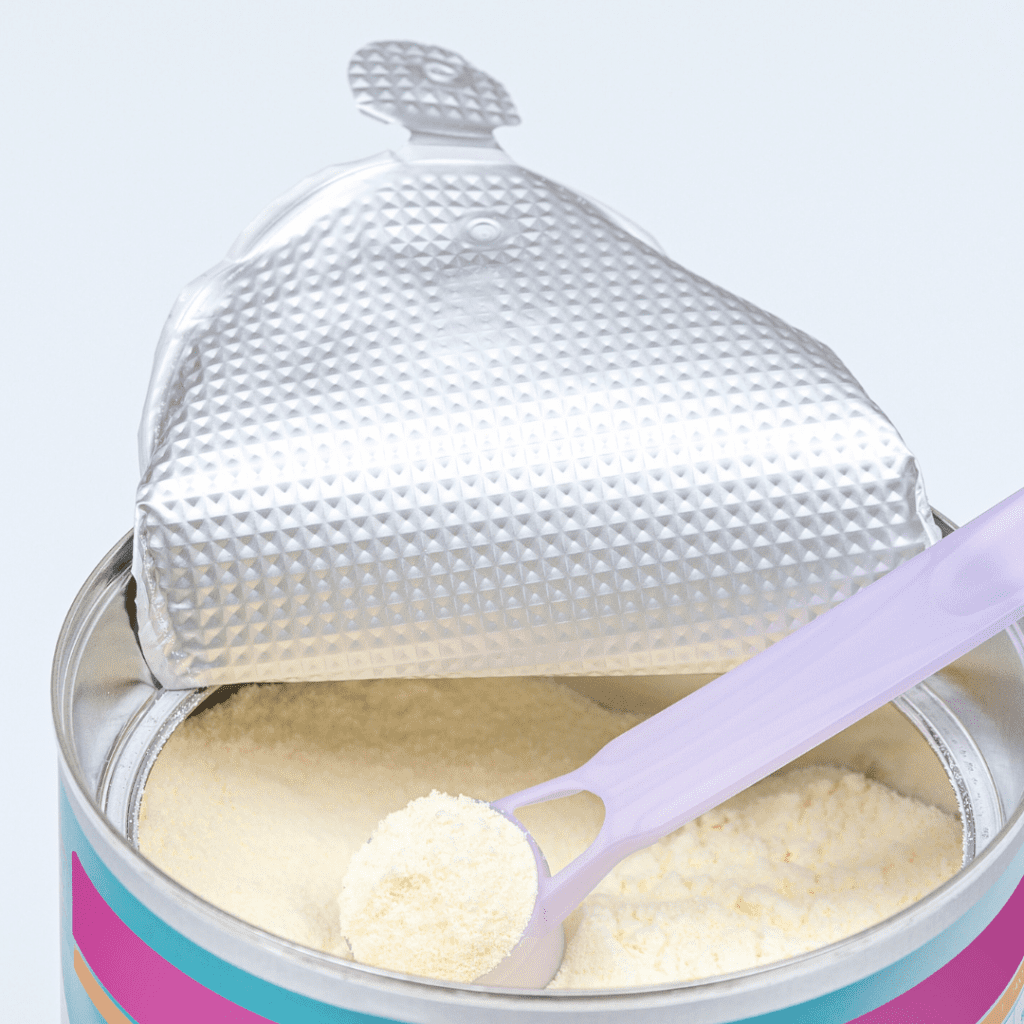
It’s important to keep in mind that goat’s milk still has milk protein and lactose, so it cannot be used for babies with cow’s milk protein allergy, or lactose intolerance.
Overall, goat’s milk formula is considered a safe and nutritious alternative to cow’s milk-based formulas for those who choose to explore this option (22).
Ignore marketing gimmicks
Finally, before we jump into some formula comparisons, we wanted to share this tip with you (and we wish we didn’t have to!).
Access to safe and nutritious food for your baby is a right, however, formula is also a multibillion-dollar industry (23). Many formula companies will use claims on their package to describe what makes their product special. Claims like “gold”, “closest to breast milk”, “gentle” and “sensitive” are common ones.
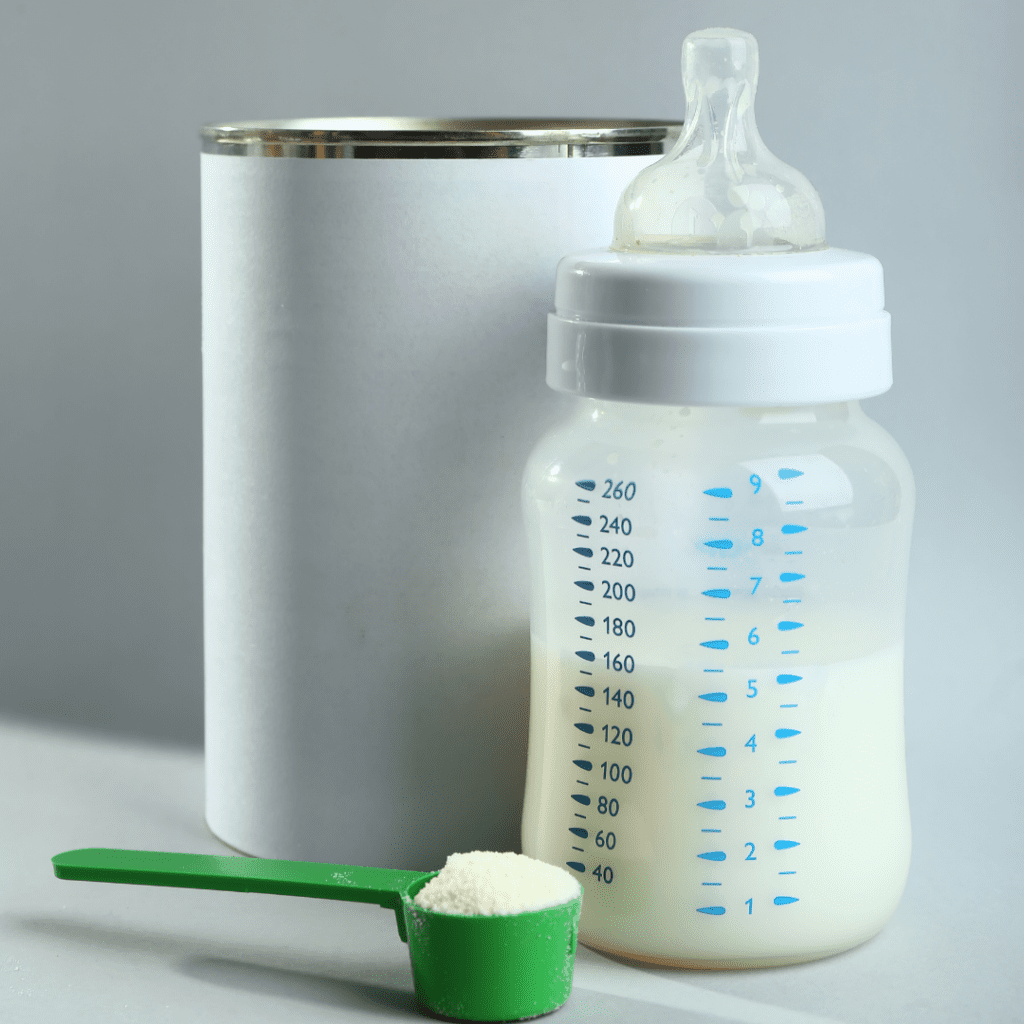
These terms are not necessarily standardized and therefore it’s possible for two different brands to use the same term to describe their formula, but actually they may have things that are different about them (from an ingredient perspective).
All this is to say that the front of the package can be misleading. Our recommendation? Be cautious of claims on packages that seem like they’re overpromising, and don’t spend too much time analyzing the front of the label – focus on the ingredients instead.
Formula Comparison
Let’s take a look at a few different formula brands, and see how they stack up to each other.
Bobbie Organic Infant Formula
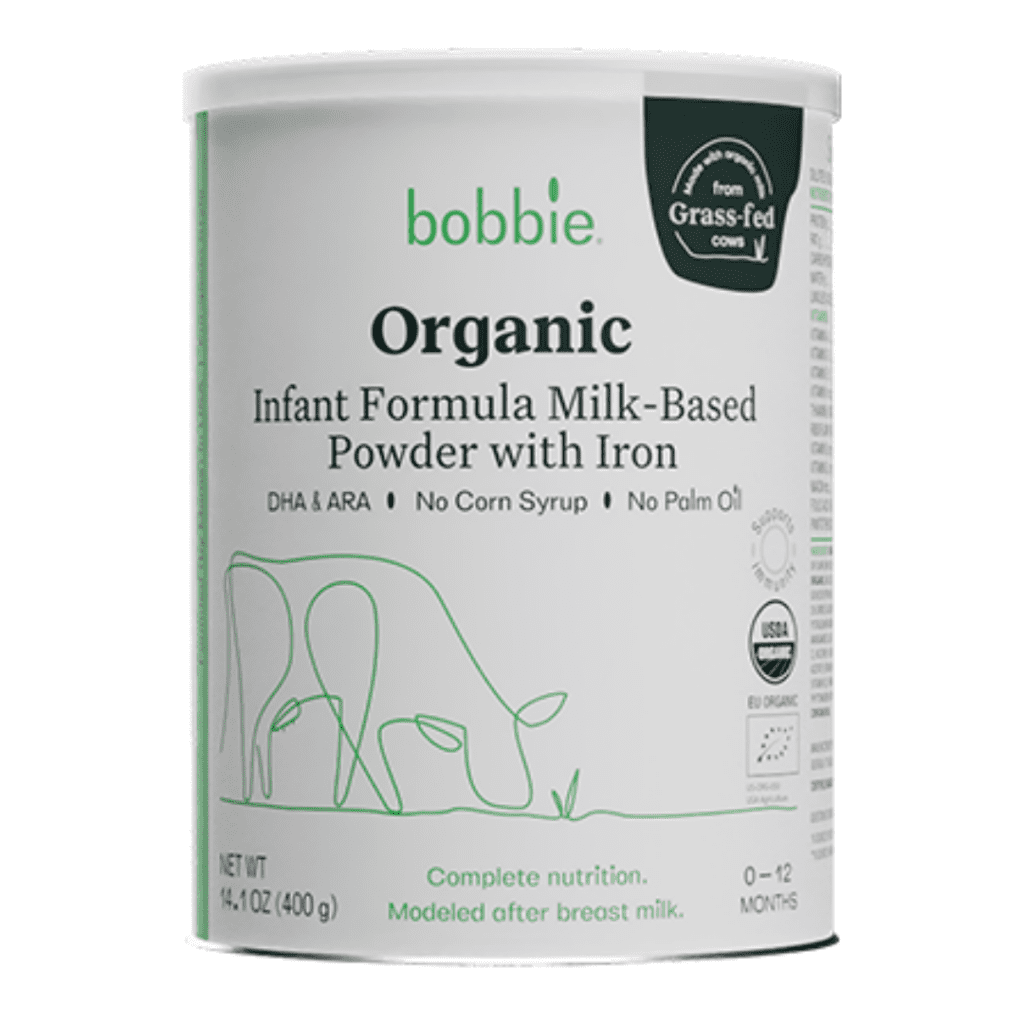
Bobbie Organic Infant Formula has been quickly gaining popularity since entering the market in 2021, and for good reason! Bobbie Organic Infant Formula is a grass-fed cow’s milk-based formula with a 60:40 whey-to-casein ratio for easier digestion, which we absolutely love.
It’s inspired by European nutrition standards, which means it uses 100% lactose as its carbohydrate source, is fortified with DHA & ARA healthy fats, and is free of corn syrup, maltodextrin, and palm oil. You can feel good knowing that Bobbie uses simple, high-quality organic ingredients free of pesticides, GMOs, and antibiotics.
We think this formula is an excellent choice and checks off most of the things on our list of priorities when choosing a formula!
Use code LittleEater10 for 10% off your first purchase including individual sales or subscriptions (discount will only be applied once and cannot be combined with other offers).
Baby’s Only A2 Organic Milk Infant Formula
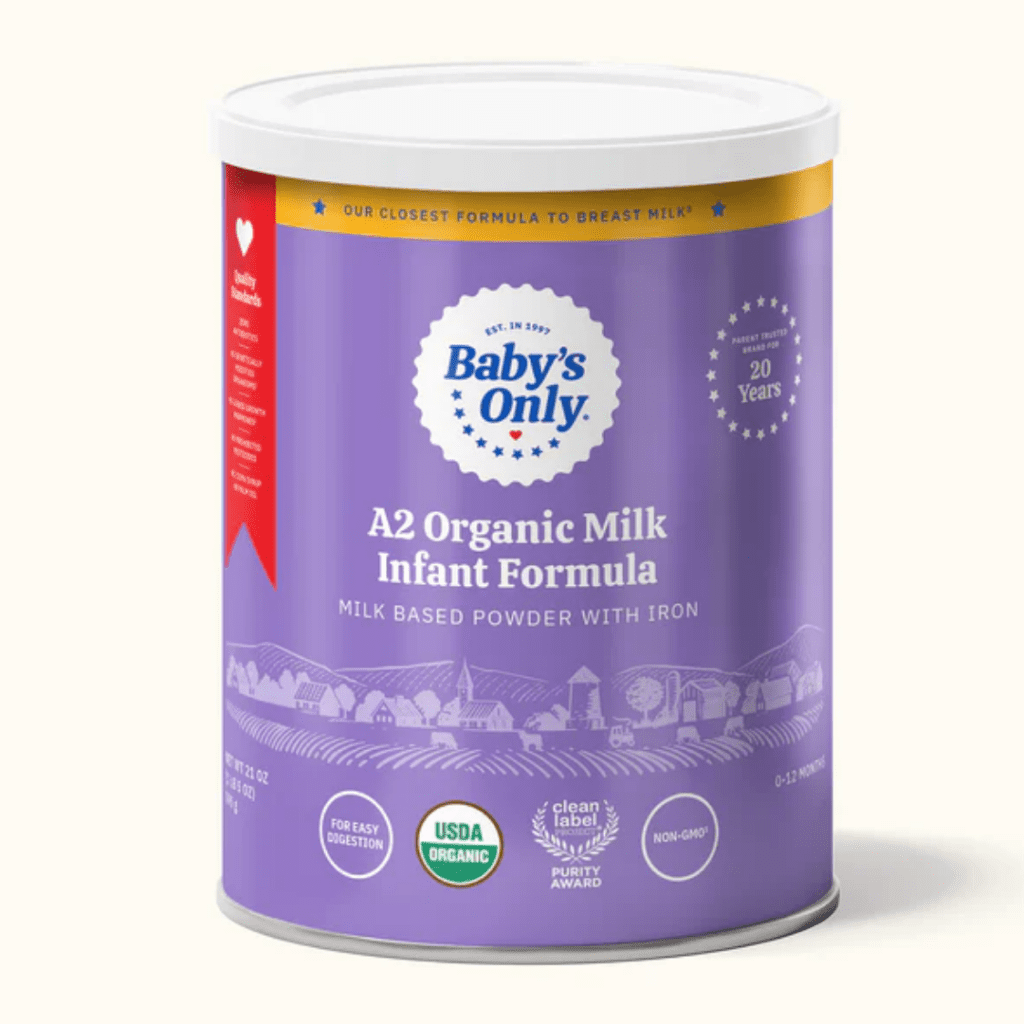
Baby’s Only A2 Organic Milk Infant Formula has become one of our new favorites! What’s special about this formula is that it’s the only organic A2 milk formula on the market (and one of the more affordable organic options at that, priced at $1.48 per ounce!). Since this formula has a 60:40 whey-to-casein ratio and uses A2 cow’s milk, it’s a great option for little ones with more sensitive tummies.
It’s also free of corn syrup and palm oil and uses 100% lactose as its carbohydrate ingredient. In fact, it’s made with such high-quality ingredients that it received the Clean Label Project Purity Award!
Use code LittleEater10 for 10% off your first purchase (discount will only be applied once and cannot be combined with other offers).
Kendamil Organic Infant Formula
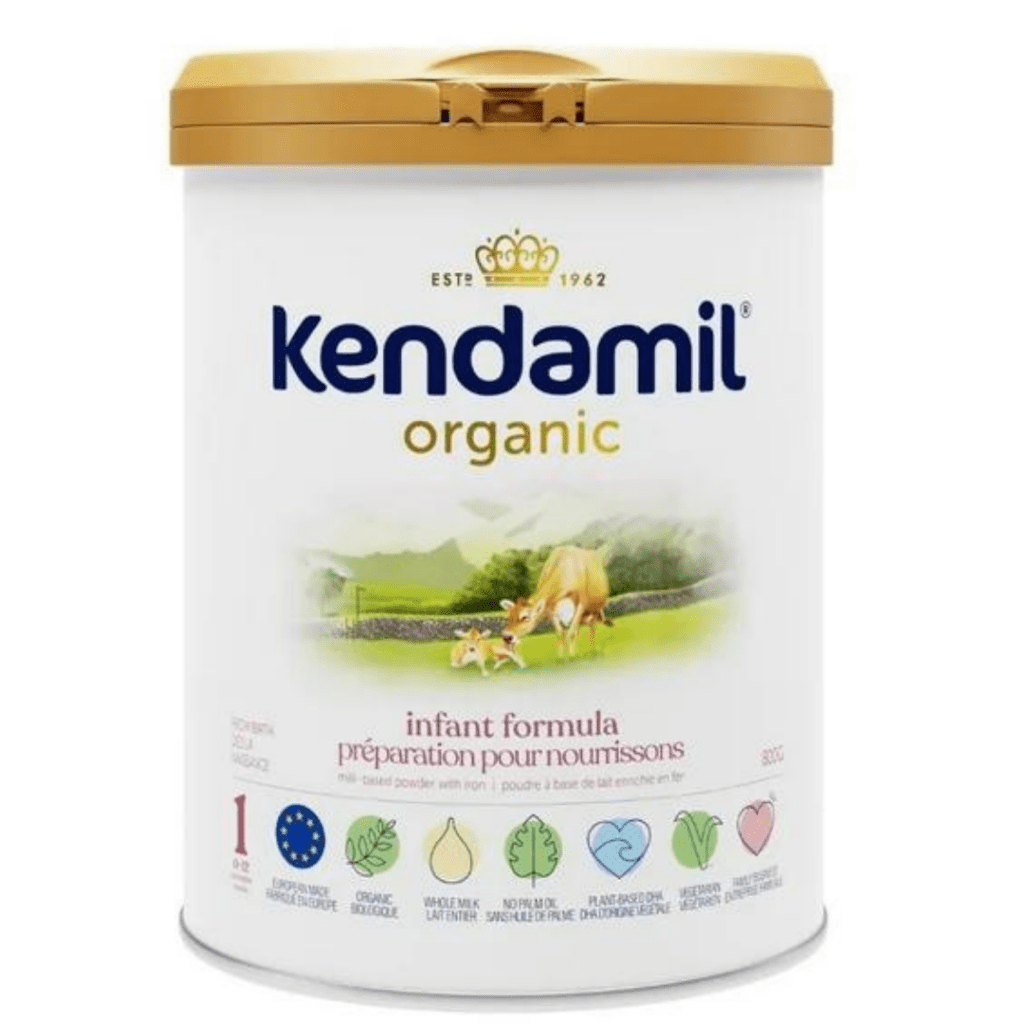
Kendamil Organic Infant Formula is another excellent option! It’s a European brand that meets both American and European nutrition standards. This formula uses organic ingredients, is free of corn syrup and palm oil, and has added DHA and ARA healthy fats.
As a standard cow’s milk-based formula, it’s made with whole milk, using lactose as its carbohydrate ingredient. It also has the optimal 60:40 whey-to-casein ratio!
For our fellow Canadian moms, this formula is also available in Canada!
Did you know?
Did you know?
In the US, 75% of moms used formula at some point in the first 6 months of their baby’s life, and in Canada, that number is 65.5% of moms using formula (24, 25). Check out the results from the My Little Eater community – nearly a 50/50 split on parents offering only breastmilk vs. parents that offered at least some formula.
Bottom line – if you’re considering using formula, you are certainly not alone and your baby will be just fine!
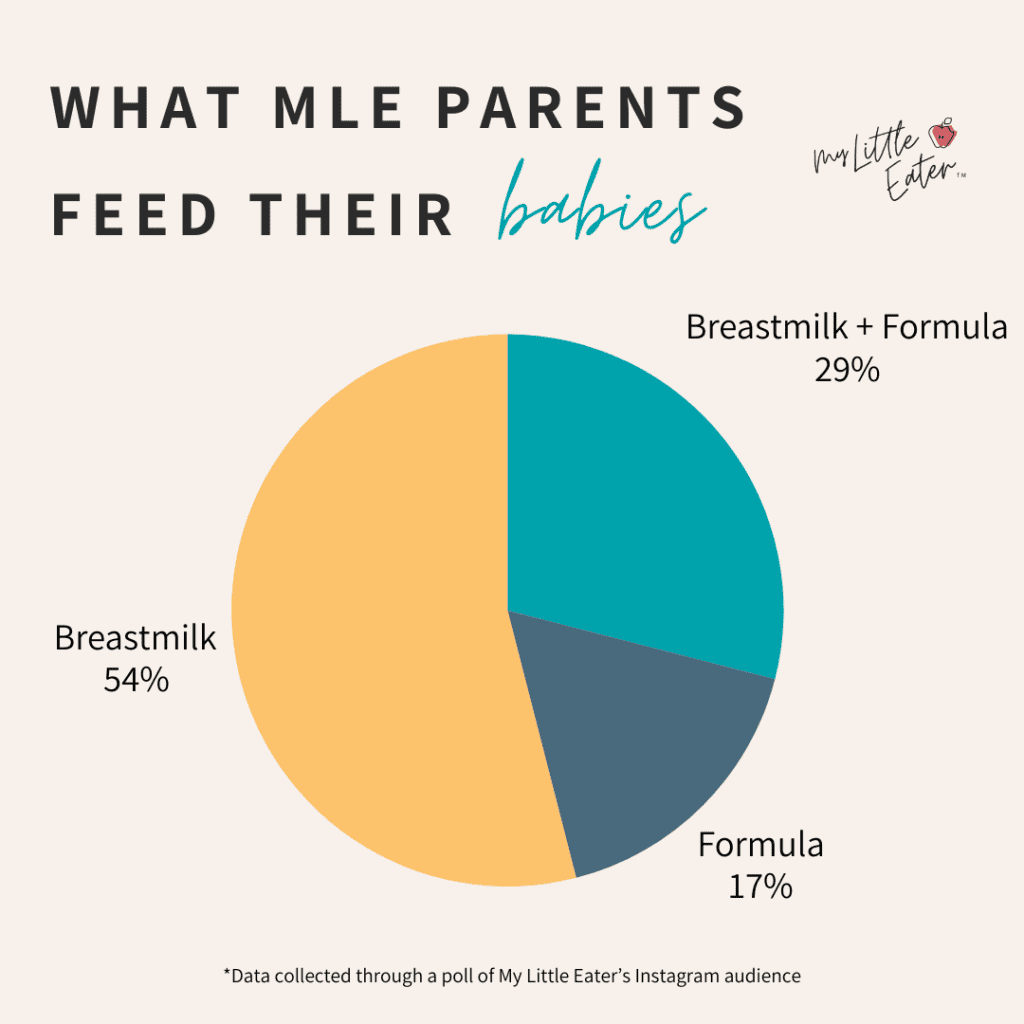
Kirkland Signature ProCare Infant Formula
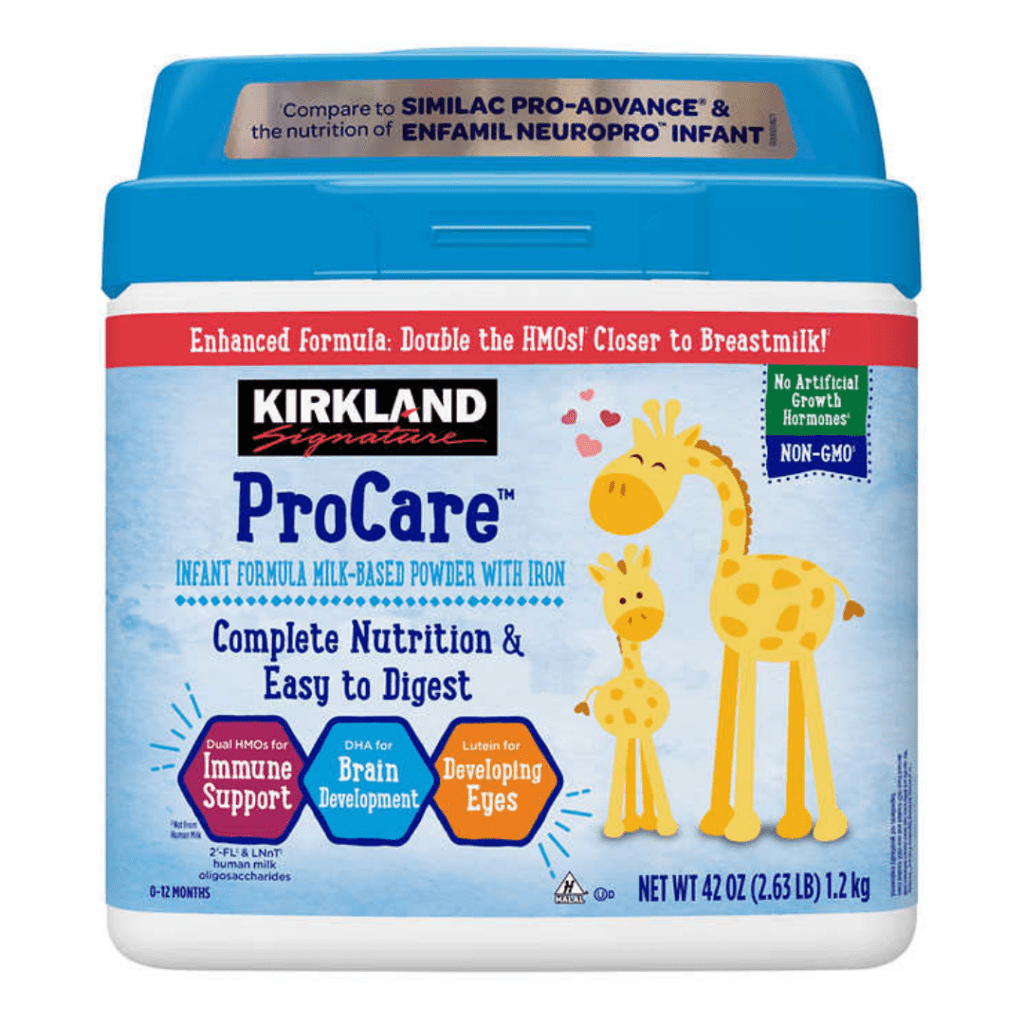
While Costco may not be the first place you think to go when looking for a baby formula, they have a surprisingly good option at an incredible price. Kirkland Signature ProCare Infant Formula is a standard cow’s milk formula with lactose as its carbohydrate ingredient. It also has added DHA healthy fats and contains no added palm oil or corn syrup.
Its whey-to-casein ratio is not quite 60:40, but at 52:48 whey-to-casein, it’s pretty close! This formula is not organic, but overall, it’s a good option at a very accessible price point of $0.52 per ounce!
Kabrita Goat Milk-Based Infant Formula
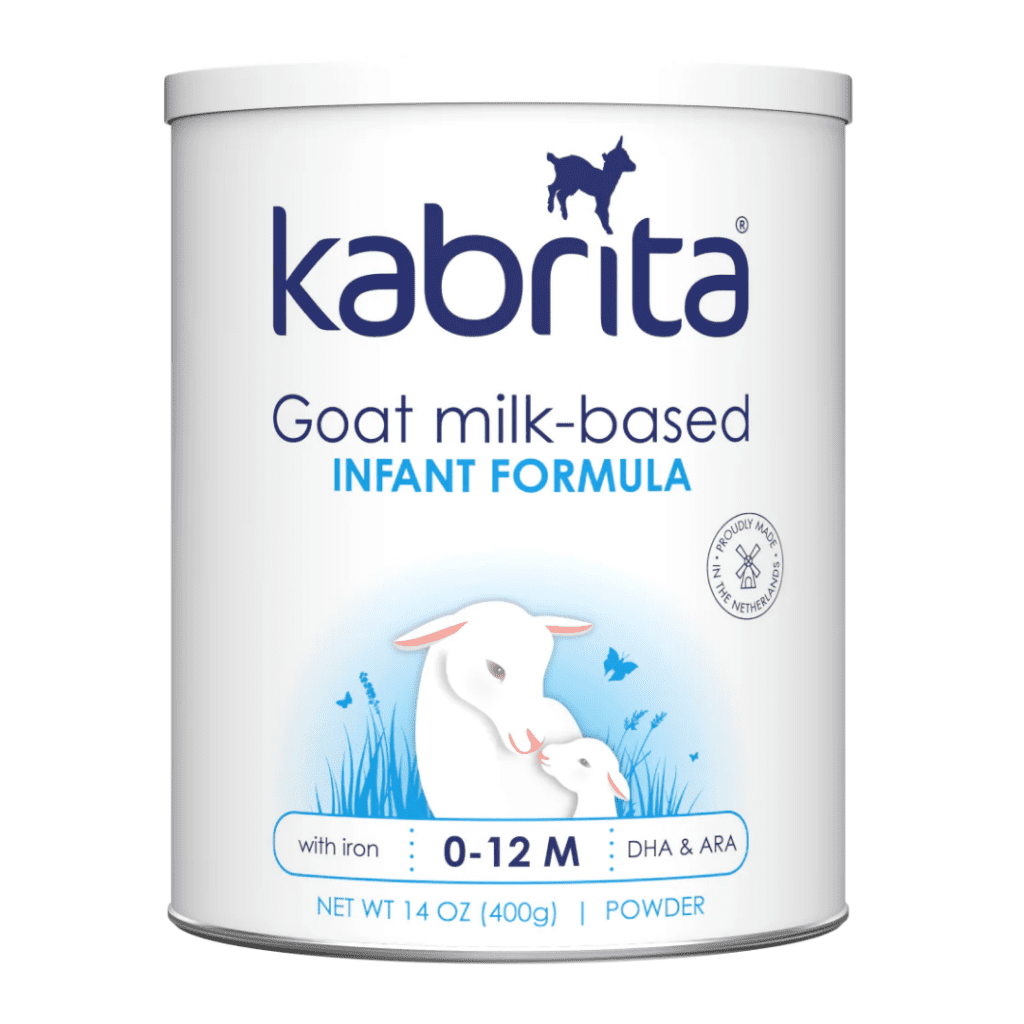
Okay, let’s switch it up with a goat’s milk-based formula. Kabrita Goat Milk-Based Infant Formula is a European formula made with grass-fed goat’s milk with a naturally higher ratio of A2 casein protein than regular cow’s milk.
It meets most of our criteria with a 60:40 whey-to-casein ratio, lactose as its main carbohydrate ingredient, no corn syrup, and added DHA & ARA healthy fats.
Cons of this formula are that it is not organic and it contains palm oil. Both of which are key points to keep in mind when comparing this option to others on the market.
Similac Soy Isomil
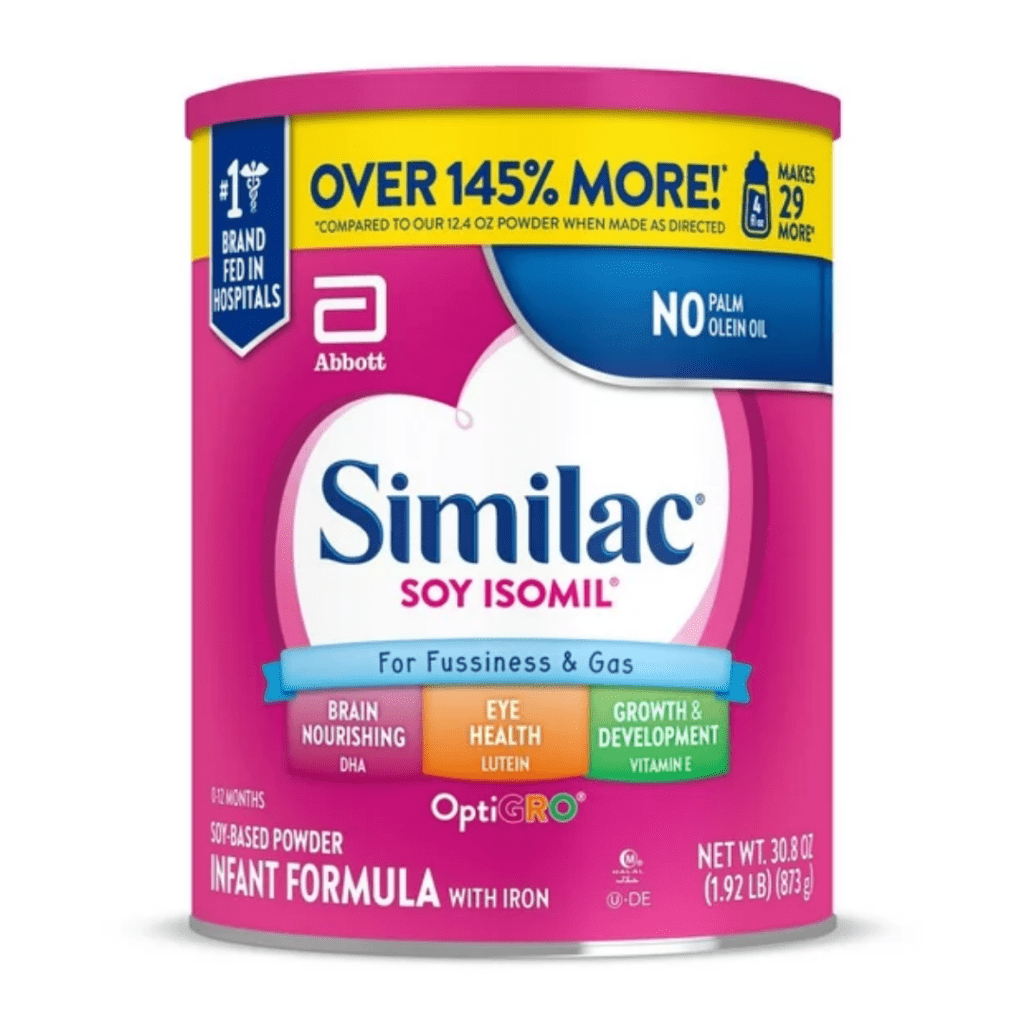
Similac Soy Isomil is a soy-based formula. Although cow’s milk formula is the best option for most babies, there are some cases where a soy formula may be appropriate, as mentioned above. That said, be sure to talk to your pediatrician before switching to a soy formula.
We love that this formula has added DHA healthy fats and contains no palm oil, however, it does fall short in a few areas – mostly just because it’s made from soy instead of cow’s milk. For example, since it can’t be made with lactose, it uses corn syrup as its main carbohydrate ingredient. It also can’t meet the recommended whey-to-casein protein ratio because it’s free of milk proteins altogether.
For babies who need to be on soy formula, we think this is a good option at an affordable price of $1.35 per ounce.
Enfamil Gentlease Baby Formula

Enfamil Gentlease Baby Formula is an example of a cow’s milk-based formula that is partially hydrolyzed. These formulas might be helpful for babies who struggle to digest intact milk proteins or who experience excess gas or fussiness. Most babies won’t need a partially-hydrolyzed formula like this one, so it’s important to speak to your pediatrician before trying it with your baby.
If your pediatrician has recommended trying a partially-hydrolyzed formula, we like this one because it has added DHA & ARA healthy fats. Some cons with this formula are that it uses corn syrup instead of lactose as its carbohydrate source and it contains palm oil. But overall, it is one of the more affordable partially-hydrolyzed options at $1.65 per ounce.
Still need some help deciding? Let’s compare each one side by side!
Click on the image to download and save it or pin it to Pinterest for later.
How to know you’ve picked the right formula
Let us just start out by saying that before deciding whether or not a formula is right for your baby, it’s important to give them a chance to get used to it first! Avoid the temptation of trying a different type of formula at each feeding and try not to jump to conclusions after only a couple of days.
Babies can take time to adjust to a new formula, often between 1-2 weeks (29). That’s why when starting a new formula, we recommend only buying a small container that will last you around 2 weeks. If your baby doesn’t tolerate it, you’re not left with a ton of extra formula that you can’t use.
We also recommend not putting baby formula on your baby registry, as this may leave you with a surplus of one kind before you even know if it works for your baby.

Once you’ve given your baby 1-2 weeks to adjust to a new formula, knowing whether you’ve picked the right one is actually pretty simple! If your baby is drinking close to the recommended amount based on their age, is consistently gaining weight at check-ins, and seems happy, chances are that you’ve picked a formula that works for your baby!
Ultimately, you know your baby best, so follow their cues. If something seems out of the ordinary and you think it could be related to formula, contact your pediatrician for further guidance.
When switching formulas may be necessary
Babies can be very unpredictable and it can be difficult to pinpoint an exact reason for their behavior. Is it the formula? Are they extra tired today? Is it reflux? You get the idea!
Let’s go through what some of the most common symptoms to watch for are that may point to their formula being the cause. We’ll also go through a scenario very much outside of your control, but it’s one that we’ve seen happen recently and want you to be prepared for.
Intolerances or allergies

If your baby is experiencing some gas and fussiness, there’s no need to panic! This can be completely normal – especially when first starting on a new formula. That being said, there are some things to look out for that may indicate your baby is not tolerating their formula.
Symptoms may include (30):
- Spitting up/reflux
- Constipation
- Excessive gas
- Excessive crying or fussiness after feeding
- Difficulty sleeping
- Poor weight gain
If your baby is experiencing any of the above, we recommend speaking with their pediatrician first. We understand that you want to help your baby feel comfortable as soon as possible, but before running to the store to look for a new formula, you need to rule out allergies, intolerances, or other medical conditions.
Top Tip
Top Tip
Looking to channel that anxious energy into something productive while waiting for your appointment? We recommend keeping a feeding journal listing your baby’s symptoms, how soon symptoms start after feeding, and how long symptoms last. This information can help give your pediatrician a better picture of what could be going on.
There are some signs to look out for that are more urgent, as they could indicate a more severe allergic reaction. If you notice any of the symptoms below, contact your pediatrician or head to your nearest emergency room immediately for an evaluation and next steps.
Signs of a potential allergy (31):
- Rash
- Hives
- Wheezing
- Blood or mucus in the stool
- Persistent vomiting
- Persistent diarrhea

Formula shortage
This is the other reason why you may need to consider switching formulas and it’s completely outside of your control (which we know can be frustrating!).
After the COVID-19 pandemic, we know that this is unfortunately not outside the realm of possibility as several stores experienced formula shortages during this time due to supply chain issues and recalls. That is why something else to consider when choosing a baby formula is what kind of facility it’s produced in.
The reason for the widespread shortages during the pandemic came from the fact that most companies manufacture their product in the same shared facility. If one brand of formula were to be affected by production or shipping delays, that means that all of the other brands produced in the same location could be affected too.
On top of this, shortages can also be caused by a product being recalled because of contamination. When this happens, the entire facility needs to shut down and be disinfected before being allowed to resume production. This means even the products that were not recalled but are made in the same facility, are forced to pause production too (32).

All this to say that choosing a formula that doesn’t share a facility with other brands is a big plus! Baby’s Only is an independently produced baby formula brand with their own manufacturing facility, which means they’re much less likely to be affected by shortages.
But what do you do if this were to happen, or if your usual brand of formula is discontinued, sold out, etc.? The most important thing to do in the case of a shortage is to not panic (we know, we know… WAY easier said than done).
If you need to look for a new formula, look for options that are similar to what you’re already offering by comparing the ingredients list. Look for similarities in sources of protein, carbohydrates, and fats. Getting a formula with similar ingredients will help make the switch less drastic for your baby.
No matter what, please do not turn to making homemade infant formula. Doing so could result in very serious nutrient deficiencies and it can also increase the risk of accidental contamination which could make your baby very sick (17).
We hope to never have to deal with a formula shortage again – but it’s good to be prepared, just in case!
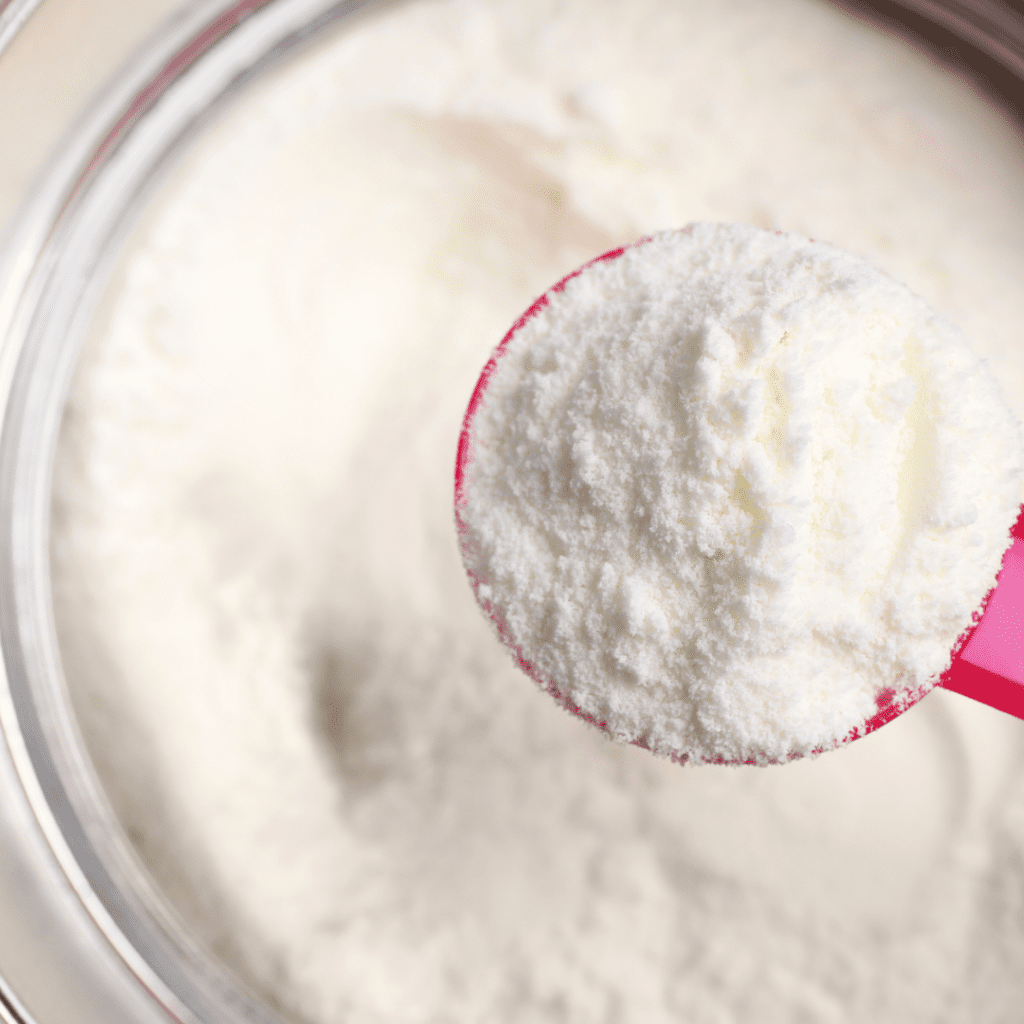
Infant formula FAQs
Store brand or name brand?
As mentioned above, all baby formulas for sale in the US (name brand or not) need to meet the same required nutrition standards set by the FDA (2). This means that name brand is not automatically better! In fact, there are often no significant differences between store brand and name brand baby formulas (from a nutrition perspective).
That said, one key difference is that store brand formulas are usually less expensive than name brand. It’s important to keep in mind that formula is something that you’ll be buying for many months – it’s best to be realistic with what you can afford right from the beginning. This will save you from having to scramble to find a different option down the road, and from having to switch formulas unnecessarily after your baby is already used to one.
Why are US parents choosing European baby formulas?
The United States and Europe both tightly regulate baby formula to make sure that it has the right nutrients in the right amounts. While the nutrition standards are similar in many ways, there are some key differences between what must and must not be added to baby formula in Europe compared to in the US.
As mentioned earlier, Europe requires that baby formulas have added DHA and ARA, while the US does not (13). The European Food Safety Authority (EFSA) also limits the use of corn syrup in baby formula, and encourages lactose as the primary source of carbohydrate instead, which we completely agree with! European formulas require that at least 30% of the carbohydrates in formula come from lactose (26).
Since most European formulas are not FDA-approved for sale in the US, some US formulas have begun to take inspiration from the way Europe makes baby formula. Bobbie is one of the only American formulas meeting most EU standards, while still undergoing FDA review required for sale in the US.
Which formula is closest to human breast milk?
As we’ve mentioned, “closest to breastmilk” is a non-standardized marketing term, so the formulas that have this written on their label are not guaranteed to be more similar to breastmilk than their neighbors on the shelf.
However, some formulas with this claim do have the qualities to back it up. Qualities that make formula more similar to breastmilk include having lactose as its main carbohydrate ingredient, having a 60:40 whey-to-casein ratio, and being made with A2 cow’s milk. A great example of this is Baby’s Only A2 Organic Milk Infant Formula, which has all of these qualities!
Some formulas labeled as “closest to breastmilk” also have added probiotics and prebiotics to mimic the beneficial bacteria naturally found in breast milk (1). Probiotics are healthy bacteria that can help with digestion and immune function, while prebiotics are a type of fiber that acts as food to help probiotic bacteria grow and thrive (27). More research is still needed to confirm any benefit from adding probiotics and prebiotics into formula, which is why it’s optional (27).
Some aspects of breastmilk simply can’t be replicated in formula like the presence of immune-supporting compounds called antibodies and immunoglobulins (28). But all in all, there are standards in place to make sure that all formulas are as close as possible to breast milk in terms of nutrition.
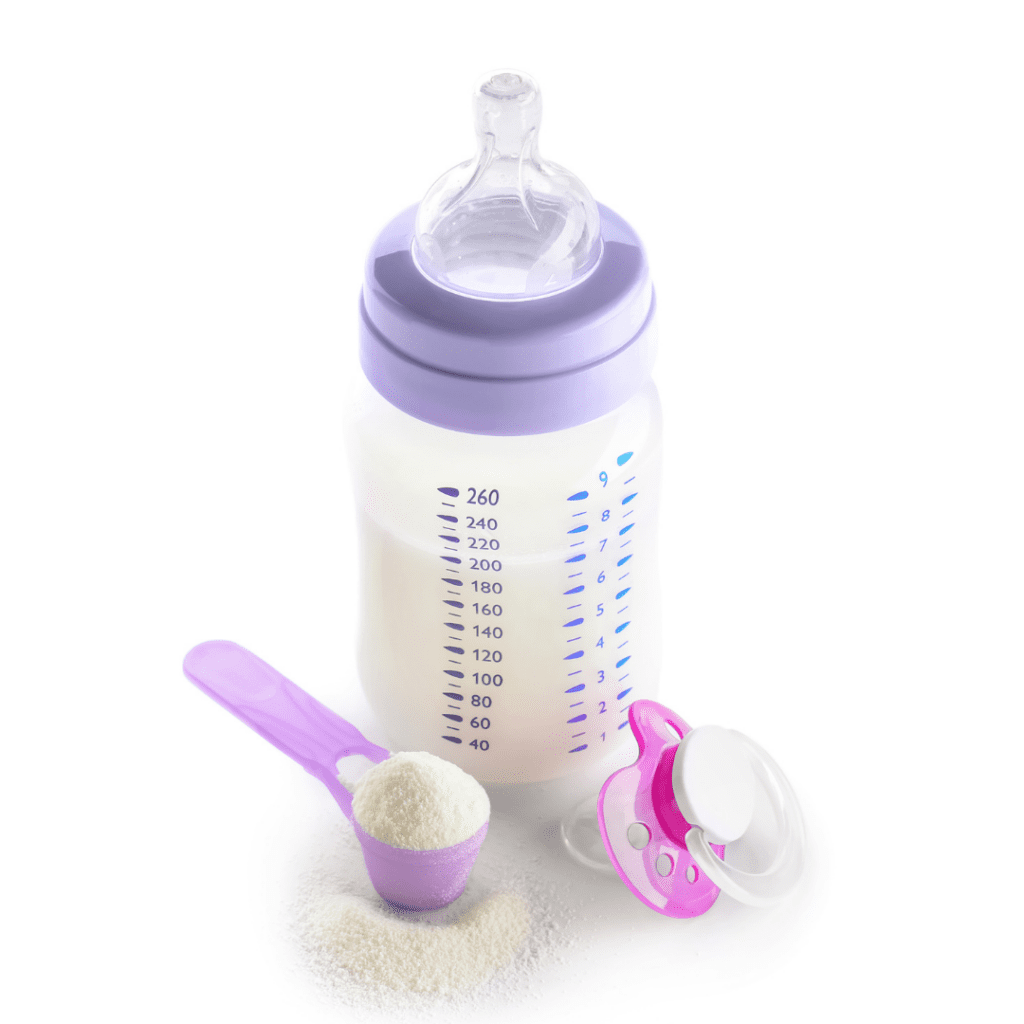
Now that you’re armed with the knowledge of the different types of baby formula that exist and what to look for, we hope that you feel confident and ready to brave the formula aisle of the store (or order online from the comfort of your pjs…no judgment here!)
Remember that there is no such thing as a formula that will be perfect for every baby, but there are plenty of wonderful formula options that will be right for your baby.
Just the fact that you took the time to read this tells us that you deeply love and care about your little one – which is what matters most at the end of the day. You’re doing amazing, mama!
References
- Green Corkins, K., & Shurley, T. (2016). What’s in the Bottle? A Review of Infant Formulas. Nutrition in clinical practice : official publication of the American Society for Parenteral and Enteral Nutrition, 31(6), 723–729. https://doi.org/10.1177/0884533616669362
- U.S. Food & Drug Administration. (2024). Infant Formula. https://www.fda.gov/food/resources-you-food/infant-formula#oversee
- Kleinman R. E. (2015). Introduction: Recommended Iron Levels for Nutritional Formulas for Infants. The Journal of pediatrics, 167(4 Suppl), S1–S2. https://doi.org/10.1016/j.jpeds.2015.07.012
- American Academy of Pediatrics (2023). Choosing a baby formula. https://www.healthychildren.org/English/ages-stages/baby/formula-feeding/Pages/Choosing-an-Infant-Formula.aspx?
- Thompkinson, D. K., & Kharb, S. (2007). Aspects of infant food formulation. Comprehensive reviews in food science and food safety, 6(4), 79-102.
- Martin, C. R., Ling, P. R., & Blackburn, G. L. (2016). Review of Infant Feeding: Key Features of Breast Milk and Infant Formula. Nutrients, 8(5), 279. https://doi.org/10.3390/nu8050279
- Fernández-Rico, S., Mondragón, A. D. C., López-Santamarina, A., Cardelle-Cobas, A., Regal, P., Lamas, A., Ibarra, I. S., Cepeda, A., & Miranda, J. M. (2022). A2 Milk: New Perspectives for Food Technology and Human Health. Foods (Basel, Switzerland), 11(16), 2387. https://doi.org/10.3390/foods11162387
- Alothman, M., Hogan, S. A., Hennessy, D., Dillon, P., Kilcawley, K. N., O’Donovan, M., Tobin, J., Fenelon, M. A., & O’Callaghan, T. F. (2019). The “Grass-Fed” Milk Story: Understanding the Impact of Pasture Feeding on the Composition and Quality of Bovine Milk. Foods (Basel, Switzerland), 8(8), 350. https://doi.org/10.3390/foods8080350
- Heyman, M. B., & Committee on Nutrition. (2006). Lactose intolerance in infants, children, and adolescents. Pediatrics, 118(3), 1279-1286. https://doi.org/10.1542/peds.2006-1721
- Koo, W. W., Hockman, E. M., & Dow, M. (2006). Palm olein in the fat blend of infant formulas: effect on the intestinal absorption of calcium and fat, and bone mineralization. Journal of the American College of Nutrition, 25(2), 117–122. https://doi.org/10.1080/07315724.2006.10719521
- Tinoco, S. M., Sichieri, R., Moura, A. S., Santos, F.daS., & Carmo, M.d (2007). Importância dos ácidos graxos essenciais e os efeitos dos ácidos graxos trans do leite materno para o desenvolvimento fetal e neonatal [The importance of essential fatty acids and the effect of trans fatty acids in human milk on fetal and neonatal development]. Cadernos de saude publica, 23(3), 525–534. https://doi.org/10.1590/s0102-311×2007000300011
- Lien, E. L., Richard, C., & Hoffman, D. R. (2018). DHA and ARA addition to infant formula: Current status and future research directions. Prostaglandins, leukotrienes, and essential fatty acids, 128, 26–40. https://doi.org/10.1016/j.plefa.2017.09.005
- Le Huërou-Luron, I., Lemaire, M., & Blat, S. (2018). Health benefits of dairy lipids and MFGM in infant formula. Oléagineux, Corps Gras, Lipides, 25(3). https://doi.org/10.1051/ocl/2018019
- Koletzko, B., Lien, E., Agostoni, C., Böhles, H., Campoy, C., Cetin, I., Decsi, T., Dudenhausen, J. W., Dupont, C., Forsyth, S., Hoesli, I., Holzgreve, W., Lapillonne, A., Putet, G., Secher, N. J., Symonds, M., Szajewska, H., Willatts, P., Uauy, R., & World Association of Perinatal Medicine Dietary Guidelines Working Group (2008). The roles of long-chain polyunsaturated fatty acids in pregnancy, lactation and infancy: review of current knowledge and consensus recommendations. Journal of perinatal medicine, 36(1), 5–14. https://doi.org/10.1515/JPM.2008.001
- Trumbo, P., Schlicker, S., Yates, A. A., Poos, M., & Food and Nutrition Board of the Institute of Medicine, The National Academies (2002). Dietary reference intakes for energy, carbohydrate, fiber, fat, fatty acids, cholesterol, protein and amino acids. Journal of the American Dietetic Association, 102(11), 1621–1630. https://doi.org/10.1016/s0002-8223(02)90346-9
- U.S. Department of Agriculture. (2022). Organic 101: What the USDA Organic Label Means. https://www.usda.gov/media/blog/2012/03/22/organic-101-what-usda-organic-label-means
- Centers for Disease Control and Prevention. (2023). Choosing an Infant Formula. https://www.cdc.gov/nutrition/infantandtoddlernutrition/formula-feeding/choosing-an-infant-formula.html
- Isolauri, E., Sütas, Y., Mäkinen-Kiljunen, S., Oja, S. S., Isosomppi, R., & Turjanmaa, K. (1995). Efficacy and safety of hydrolyzed cow milk and amino acid-derived formulas in infants with cow milk allergy. The Journal of pediatrics, 127(4), 550–557. https://doi.org/10.1016/s0022-3476(95)70111-7
- Verduci, E., Di Profio, E., Cerrato, L., Nuzzi, G., Riva, L., Vizzari, G., D’Auria, E., Giannì, M. L., Zuccotti, G., & Peroni, D. G. (2020). Use of Soy-Based Formulas and Cow’s Milk Allergy: Lights and Shadows. Frontiers in pediatrics, 8, 591988. https://doi.org/10.3389/fped.2020.591988
- Critch, J. N., Canadian Paediatric Society, & Nutrition and Gastroenterology Committee. (2014). Nutrition for healthy term infants, six to 24 months: an overview. Paediatrics & child health, 19(10), 547.
- Muñoz-Salinas, F., Andrade-Montemayor, H. M., De la Torre-Carbot, K., Duarte-Vázquez, M. Á., & Silva-Jarquin, J. C. (2022). Comparative Analysis of the Protein Composition of Goat Milk from French Alpine, Nubian, and Creole Breeds and Holstein Friesian Cow Milk: Implications for Early Infant Nutrition. Animals : an open access journal from MDPI, 12(17), 2236. https://doi.org/10.3390/ani12172236
- Maathuis, A., Havenaar, R., He, T., & Bellmann, S. (2017). Protein Digestion and Quality of Goat and Cow Milk Infant Formula and Human Milk Under Simulated Infant Conditions. Journal of pediatric gastroenterology and nutrition, 65(6), 661–666. https://doi.org/10.1097/MPG.0000000000001740
- Belamarich PF, Bochner RE, Racine AD. A Critical Review of the Marketing Claims of Infant Formula Products in the United States. Clinical Pediatrics. 2016;55(5):437-442. doi:10.1177/0009922815589913
- Centers for Disease Control and Prevention. (2022). Breastfeeding Report Card United States, 2022. https://www.cdc.gov/breastfeeding/data/reportcard.htm
- Public Health Agency of Canada. (2022). Canada’s Breastfeeding progress report 2022. https://health-infobase.canada.ca/breastfeeding/
- Commission Delegated Regulation (EU) 2016/127 of 25 September 2015 supplementing Regulation (EU) No 609/2013 of the European Parliament and of the Council as regards the specific compositional and information requirements for infant formula and follow-on formula and as regards requirements on information relating to infant and young child feeding (Text with EEA relevance). (2016). Official Journal, L 25, 1-29. ELI: http://data.europa.eu/eli/reg_del/2016/127/oj
- Thomas, D. W., Greer, F. R., American Academy of Pediatrics Committee on Nutrition, & American Academy of Pediatrics Section on Gastroenterology, Hepatology, and Nutrition (2010). Probiotics and prebiotics in pediatrics. Pediatrics, 126(6), 1217–1231. https://doi.org/10.1542/peds.2010-2548
- Section on Breastfeeding (2012). Breastfeeding and the use of human milk. Pediatrics, 129(3), e827–e841. https://doi.org/10.1542/peds.2011-3552
- Health Canada. (2023). Information for families on the limited supply of infant formula. https://www.canada.ca/en/health-canada/services/infant-care/infant-formula/shortage.html
- Vivatvakin, B., Estorninos, E., Lien, R., Lee, H. C., Hon, K. L. E., Lebumfacil, J., Cercamondi, C. I., & Volger, S. (2020). Clinical Response to Two Formulas in Infants with Parent-Reported Signs of Formula Intolerance: A Multi-Country, Double-Blind, Randomized Trial. Global pediatric health, 7, 2333794X20954332. https://doi.org/10.1177/2333794X20954332
- Caffarelli, C., Baldi, F., Bendandi, B., Calzone, L., Marani, M., Pasquinelli, P., & EWGPAG (2010). Cow’s milk protein allergy in children: a practical guide. Italian journal of pediatrics, 36, 5. https://doi.org/10.1186/1824-7288-36-5
- Jung, J., Widmar, N. O., & Ellison, B. (2023). The Curious Case of Baby Formula in the United States in 2022: Cries for Urgent Action Months after Silence in the Midst of Alarm Bells. Food ethics, 8(1), 4. https://doi.org/10.1007/s41055-022-00115-1

Bianca Gruenewald, RD(c)
Bianca is a Registered Dietitian Candidate and works in a client support role at My Little Eater Inc. She's a dog-mom to Coco, and a proud auntie to her three year old niece and four year old nephew!

Bianca Gruenewald, RD(c)
Bianca is a Registered Dietitian Candidate and works in a client support role at My Little Eater Inc. She's a dog-mom to Coco, and a proud auntie to her three year old niece and four year old nephew!
Was this helpful? Pin it to save for later!
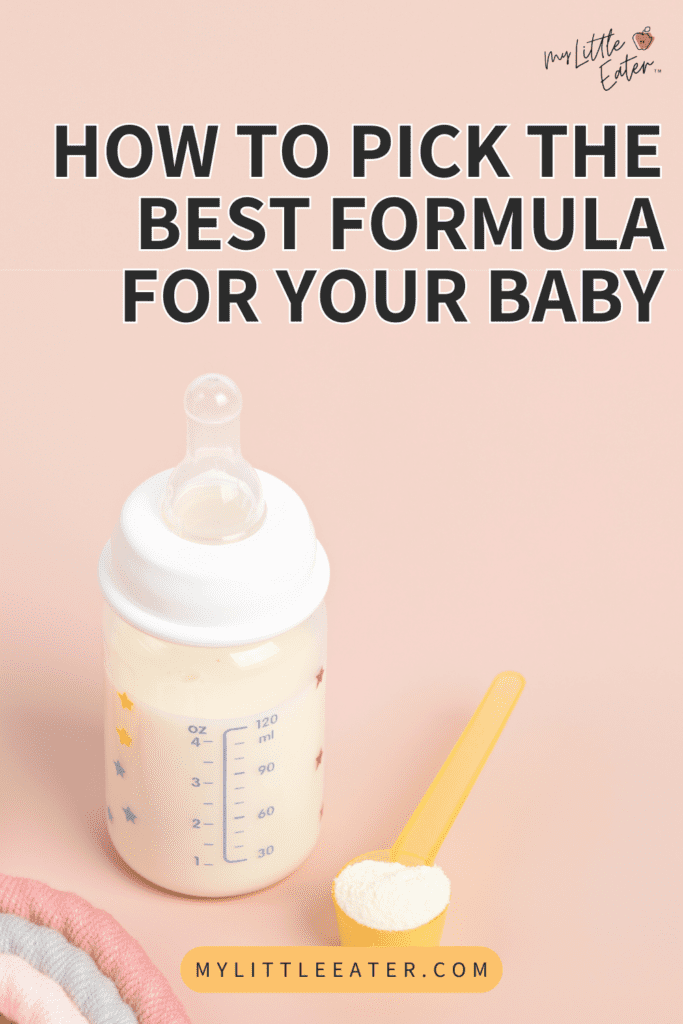
 toddler sale! 20% off toddler program with code Toddler20 at checkout
toddler sale! 20% off toddler program with code Toddler20 at checkout 